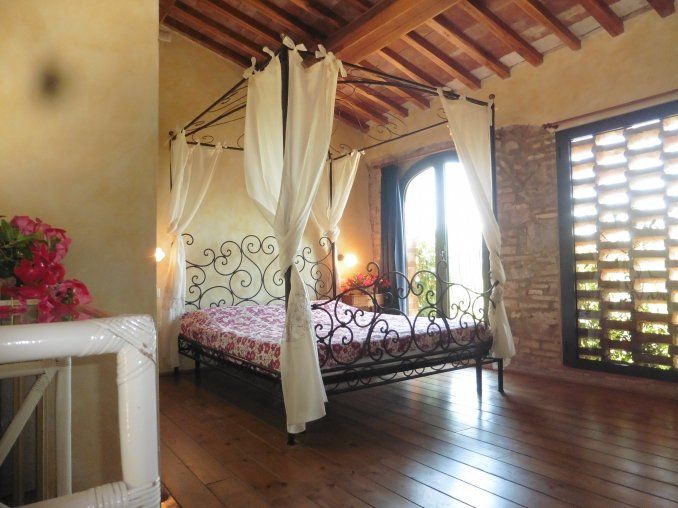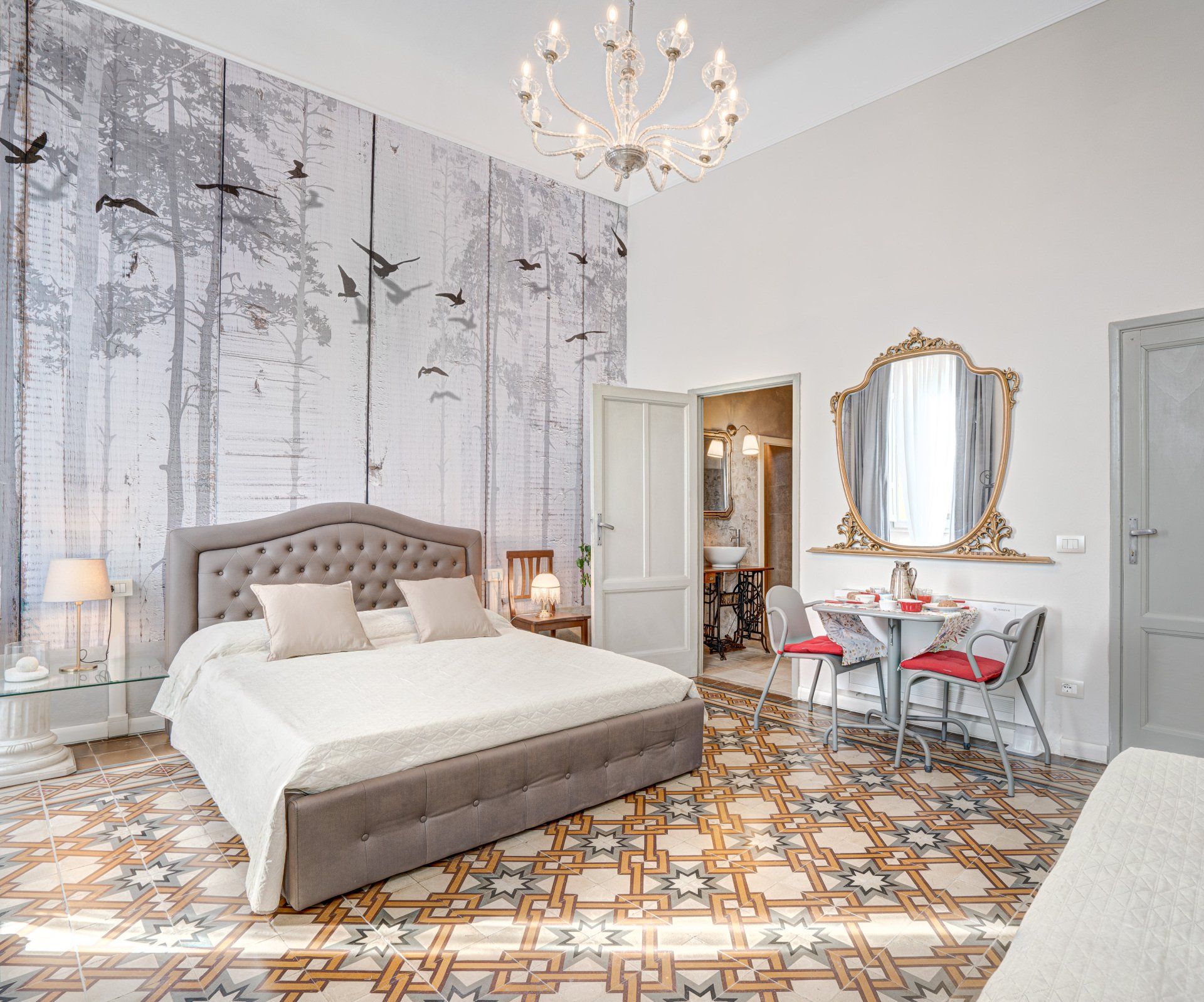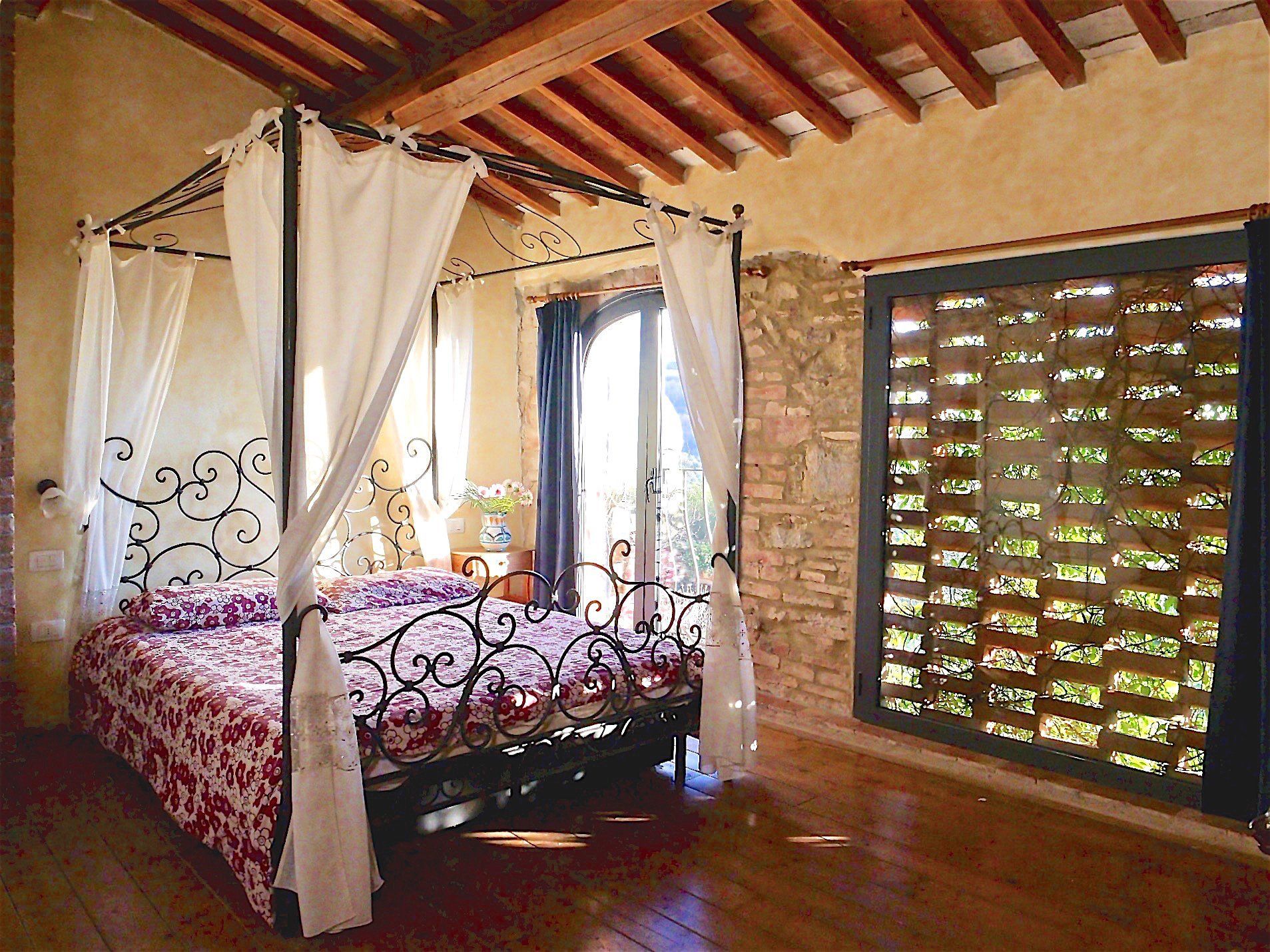Pisa

Slide title
Scrivi qui la tua didascaliaButton
-
Pisa: from marshland to a Seafaring Republic
Nobody knows exactly when Pisa was founded. Dionysius of Alicarnasso described the arrival of Deucalione Greco and his Pelagi Peloponnesians in Italy, he mentions Pisa four centuries before the War of Troy. Pliny, instead, tells us that Pisa was founded by Pelope, King of the Piseans, a good thirteen centuries before Christ; Stradone assures us that Nestor, king of Pilus, founded Pisa after the fall of Troy thirty-two centuries ago. Whether or not these are legends, the courageous Pisans were able to create a legend themselves by becoming one of the four glorious seafaring republics, along with Amalfi, Venice and Genoa, the latter being its bitter enemy. Following the fall of the Roman Empire and the subsequent conquests by the Barbarian armies, at the beginning of the eleventh century, Pisa started sculpting its name on every single drop of water in the Mediterranean Sea: it conquered Reggio Calabria in 1005 and Sardinia in 1017, defeating the Saracen king Mugahid and also limiting the trade expansion of Genoa. Between 1030 and 1035, the glorious Carthage, Bona and Lipari were conquered. An episode in the history of Pisa is depicted in one of the boxes in the spending ceiling of the Cavalieri church: the capture of four Turkish ships by six Pisan triremes in 1602 in the Aegean Sea.
The work was by Iacopo Chimenti da Empoli. Between 1051 and 1052, the great admiral Iacopo Ciurini occupied Corsica causing the Genoese to become even more resentful. A few years later, in 1063, another Pisan admiral, Giovanni Orlando, conquered Palermo and finally expelled the Saracen pirates who had made it their hideout. In later centuries Pisa was not blessed by good fortune, but this is unimportant because Pisa, a city now with eighty five thousand inhabitants, will always be pervaded by a courageous spirit and deeply connected with the sea. A few years ago, while work was being done by the Italian state railways, a good thirteen triremes reemerged from the depths of the ground (an absolute record) containing objects dating back to between the fifth century b.c. and the fifth century d.c.. Those who were there will never forget it and perhaps the valorous souls of the Pisan seamen wanted to give us a sign of their noble past by granting us this discovery, or better, this privilege!
Short history of Pisa
30/3/2025

Titolo diapositiva
Scrivi qui la tua didascaliaPulsante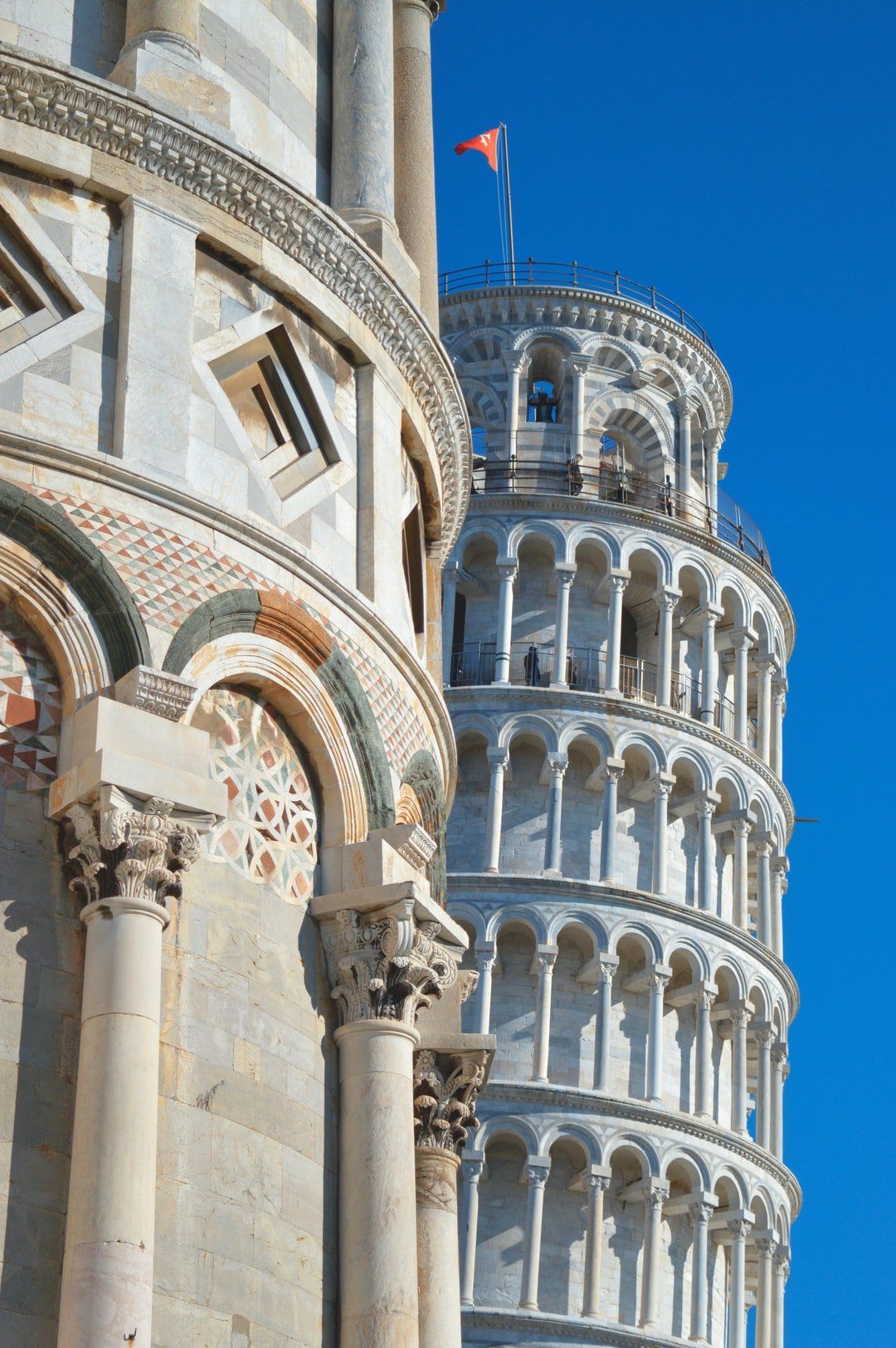
Titolo diapositiva
Scrivi qui la tua didascaliaPulsante
Titolo diapositiva
Scrivi qui la tua didascaliaPulsante
-
Pisa - Cathedral Square
It doesn't matter which way you reach the Piazza del Duomo in Pisa. If through the gate in the wall that partially surrounds the square or from one of the streets that converge from the city center, the reaction is truly one of great amazement and fascination.
It is the impact that these architectural jewels arouses in the viewer, this "snow of marble" as the ancients said, that leaves you speechless. Cathedral, Baptistery, Leaning Tower and Monumental Cemetery stand out like pearls from the green of the lawn that surrounds them.
This is why a visit to Tuscany cannot in any way fail to include a stop right here.
-
Entrance Tickets
Visiting the monuments not only from the outside, but also from the inside requires entrance tickets.
Admission to the Cathedral is with free pass. If you buy any ticket you get a free pass to visit the Cathedral, not subjected to a fixed time. The fixed time free passes for visiting just the Cathedral are limited in number and available exclusively from the ticket offices on site.
For the Tower
Tower + Cathedral ticket 20 €
Reduced-price tickets are not available.
For safety reasons, children who will not have turned 8 by the end of this year are not permitted to enter. Under 18s must be accompanied by an adult.
Please check the time of your visit on the ticket. If you are late you will not be allowed in and you will not be refunded. Hand bags/bags/luggage must be left at the cloakroom before the visit and picked up at the end of the visit.
The visit takes about 30 minutes. The climb is on foot and there are 251 steps.
The visit is not recommended for people suffering from cardiovascular and motor pathologies.
The floor is uneven and slippery.
For the purchase of Tickets with various combinations such as Cathedral + Baptistery or Cathedral + Cemetery etc. the cost is 8 €.
The ticket for the whole monumental complex (Baptistery, Camposanto, Sinopie Museum, Opera del Duomo Museum, Temporary exhibition), excluding the ascent to the tower, costs € 11
The ticket for the whole monumental complex including the Tower costs 27 €.
30/3/2025
Pisa Visita del Museo di S. Matteo orario e biglietti di ingresso
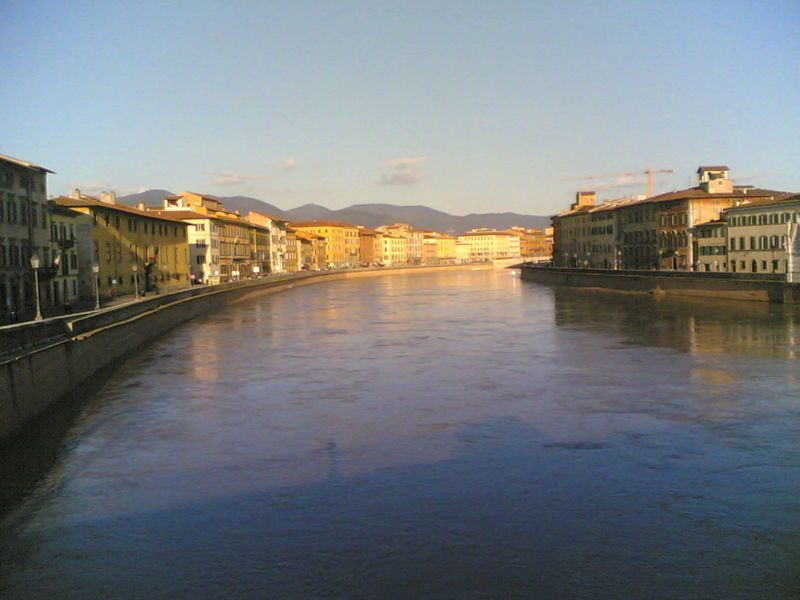
Titolo diapositiva
Scrivi qui la tua didascaliaPulsante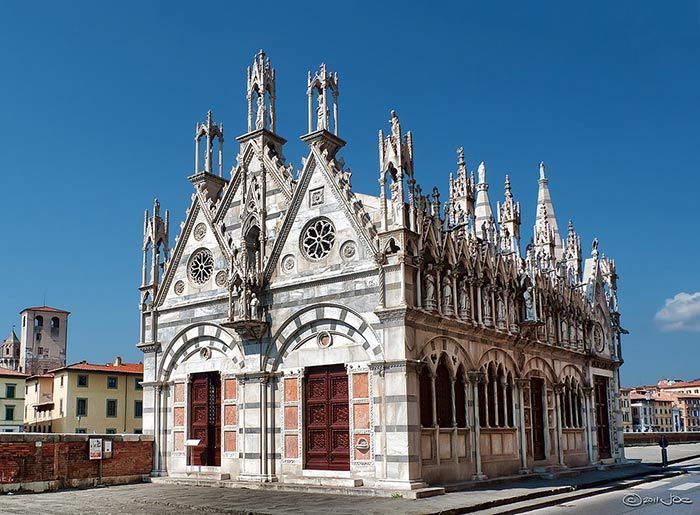
Titolo diapositiva
Scrivi qui la tua didascaliaPulsante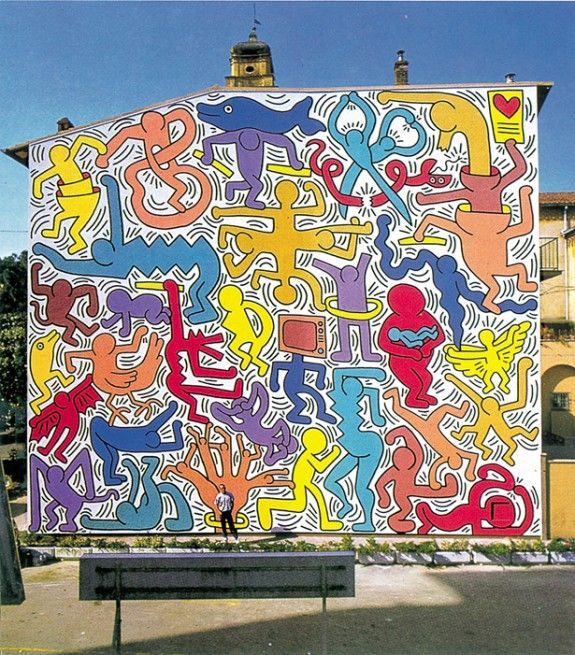
Titolo diapositiva
Scrivi qui la tua didascaliaPulsante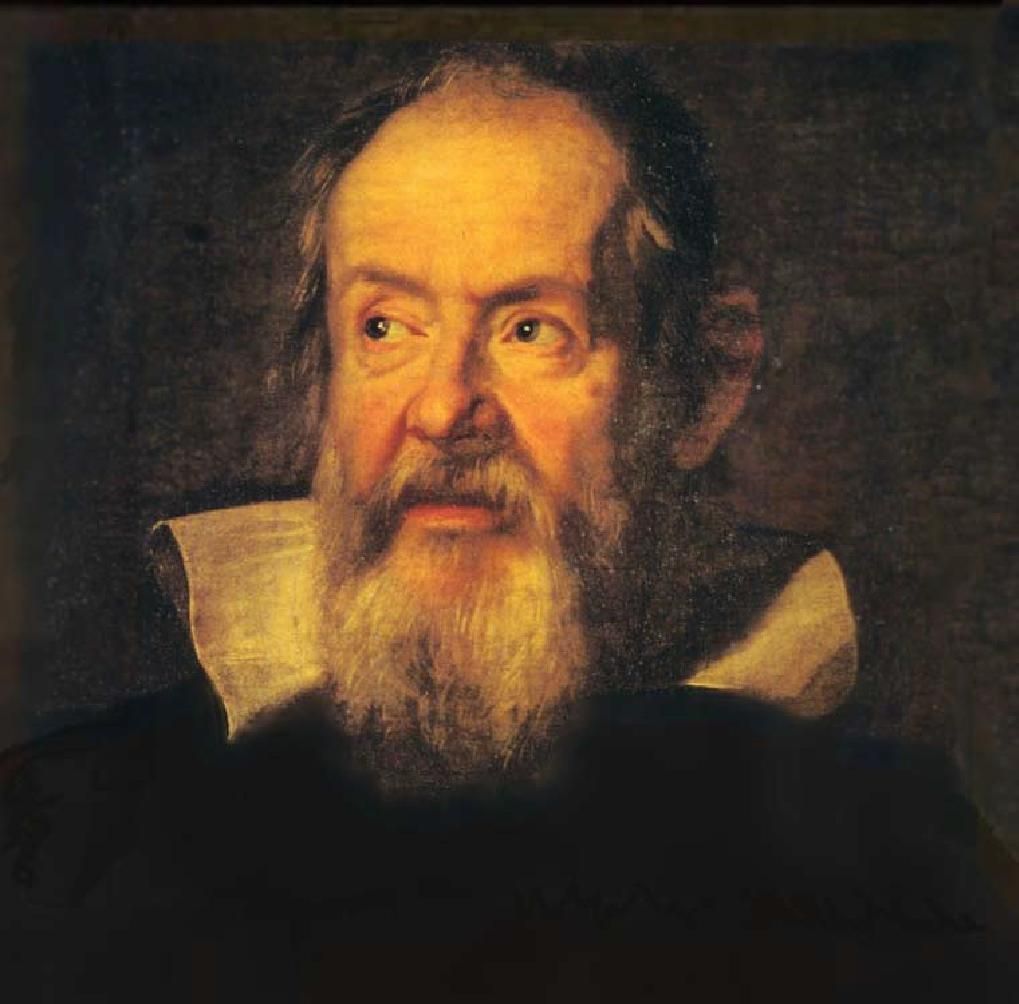
Titolo diapositiva
Scrivi qui la tua didascaliaPulsante
-
Pisa - Beyond the Cathedral Square
The reason why millions of tourists want to visit Pisa every year is always the same: the very famous leaning tower of Pisa. The construction began during the XII century, the tower is 55 meters high, dominating the splendid Piazza dei Miracoli and it is part of the human heritage of UNESCO together with the Baptistery, the Cemetery and the magnificent Romanesque Cathedral, constructed between 1064 and 1118. The Cathedral is admirable above all for the bronze portals by Bonanno Pisano and for the pulpit by Giovanni Pisano. It’s useless to talk at length about the leaning tower, maybe the most widespread symbol of Italy abroad, but the tower is fundamental to the tourism in Pisa. A part from the fact that the tower attracts large numbers of visitors each year from all over the world (favoured by the efficient and nearby airport, the biggest in Tuscany) it’s also true that the tourists, after having taken the obligatory photo in which they fake to hold up the tower, they are also very satisfied with the view of the square (maybe the only one in Tuscany with a large space to let the “mirabilia” of the buildings breathe), with the lawn, and having seen all that they are ready to go on to Florence and Rome. But the truth is that Pisa is not only the leaning tower.
The Palazzo della Carovana by Giorgio Vasari, for example, situated in the Piazza dei Cavalieri and seat of the prestigious Scuola Normale Superiore (a part from the Normale, Pisa has two other universities, also very important in the European cultural panorama) it’s definitely worth a visit. There are also the churches, above all the Church of San Nicola built in 1097 and enlarged in 1313 by the Augustinian monks and famous for its octagonal bell tower, numerous frescoes attributed to Francesco Traini and the wooden sculptures by Giovanni and Nino Pisano. Other splendid churches are the Church of San Paolo a Ripa d’Arno, from 952, frescoed by Buonamico Buffalmacco and Turino Vanni, with the precious XIV century facade by Giovanni Pisano, and the Church of Santa Maria della Spina, a masterpiece of Gothic art, situated on south edge of the Solferino bridge and therefore dismounted brick by brick, during the eight hundreds, and reconstructed on a higher level to protect it from the dangers caused by the river. A beautiful and relaxing stroll along the riverside is advisable after a long day, perhaps at sunset, with a break at the famous Ponte di Mezzo, letting your imagination take you back a few centuries to the time of Galileo Galilei, thinking about how he, thoughtful, and maybe without understanding the importance his intuitions, would change the whole history of man kind.
30/3/2025
Pisa - Beyond the Cathedral Square

Titolo diapositiva
Scrivi qui la tua didascaliaPulsante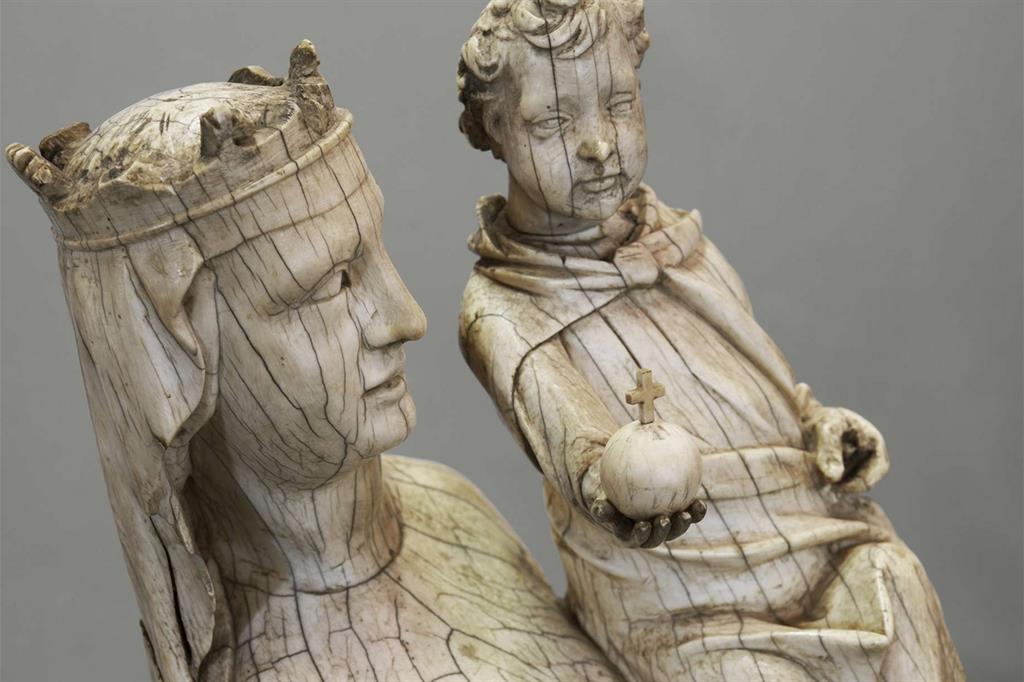
Titolo diapositiva
Scrivi qui la tua didascaliaPulsante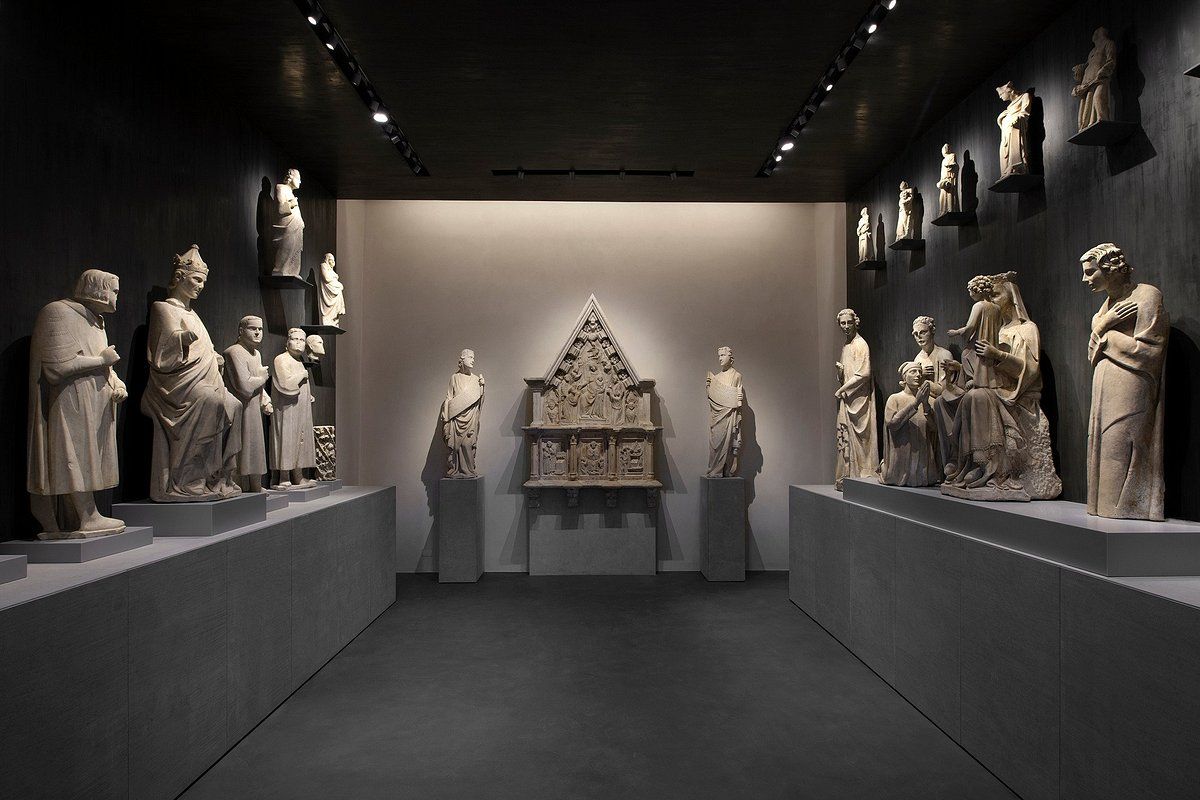
Titolo diapositiva
Scrivi qui la tua didascaliaPulsante
Titolo diapositiva
Scrivi qui la tua didascaliaPulsante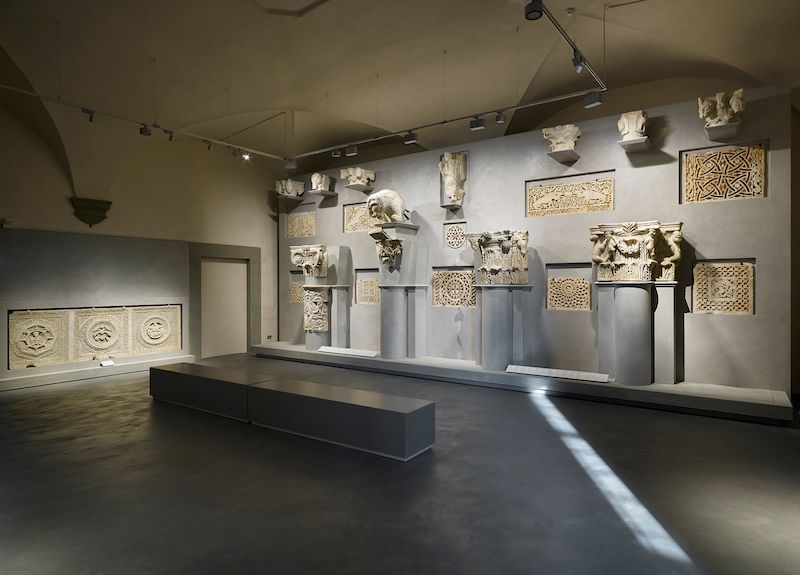
Titolo diapositiva
Scrivi qui la tua didascaliaPulsante
-
Pisa - Museum of the Cathedral
The numerous works of art exhibited all originate from the monuments of the Piazza del Duomo.
The visit starts in solemn style on the ground floor, with the Bonanno Door. This is followed by a gallery devoted to the Cathedral in the Romanesque age, and the tour continues with the Baptistery and its Gothic sculptures.
Scuptures from the twelfth to the fourteenth centuries are on display, among them are masterpieces of Nicola and Giovanni Pisano, Lupo di Francesco, Tino di Camaino and of Nino Pisano.
An entire room is dedicated to the scultures of the tower.
On the first floor are paintings and sculptures, Renaissance wood marquetry, medieval illuminated hymnals and scrolls and ecclesiastical vestments, the textiles and goldwork gathered around the funeral shroud and insignia of Emperor Henry VII illustrate the key role played by these techniques in the art of the past.
However, the museum does not end here. Once out in the loggia, the visitor has a splendid view of the Tower before going down to the ground floor to see one last magnificent manifestation of Pisan sculpture at its finest in the cloister. Some colossal busts that once crowned the Baptistery are aligned along the left-hand wall in bays that suggest the intense interaction between these statues and the architecture. They were made by the young Giovanni Pisano, who has appeared many times, making him the absolute protagonist of this museum.
-
Entrance Tickets
Visiting the monuments not only from the outside, but also from the inside requires entrance tickets.
Admission to the Cathedral is with free pass. If you buy any ticket you get a free pass to visit the Cathedral, not subjected to a fixed time. The fixed time free passes for visiting just the Cathedral are limited in number and available exclusively from the ticket offices on site.
For the Tower
Tower + Cathedral ticket 20 €
Reduced-price tickets are not available.
For safety reasons, children who will not have turned 8 by the end of this year are not permitted to enter. Under 18s must be accompanied by an adult.
Please check the time of your visit on the ticket. If you are late you will not be allowed in and you will not be refunded. Hand bags/bags/luggage must be left at the cloakroom before the visit and picked up at the end of the visit.
The visit takes about 30 minutes. The climb is on foot and there are 251 steps.
The visit is not recommended for people suffering from cardiovascular and motor pathologies.
The floor is uneven and slippery.
For the purchase of Tickets with various combinations such as Cathedral + Baptistery or Cathedral + Cemetery etc. the cost is 8 €.
The ticket for the whole monumental complex (Baptistery, Camposanto, Sinopie Museum, Opera del Duomo Museum, Temporary exhibition), excluding the ascent to the tower, costs € 11
The ticket for the whole monumental complex including the Tower costs 27 €.
30/3/2025
Pisa - Museum of the Cathedral

Slide title
Scrivi qui la tua didascaliaButton
Slide title
Scrivi qui la tua didascaliaButton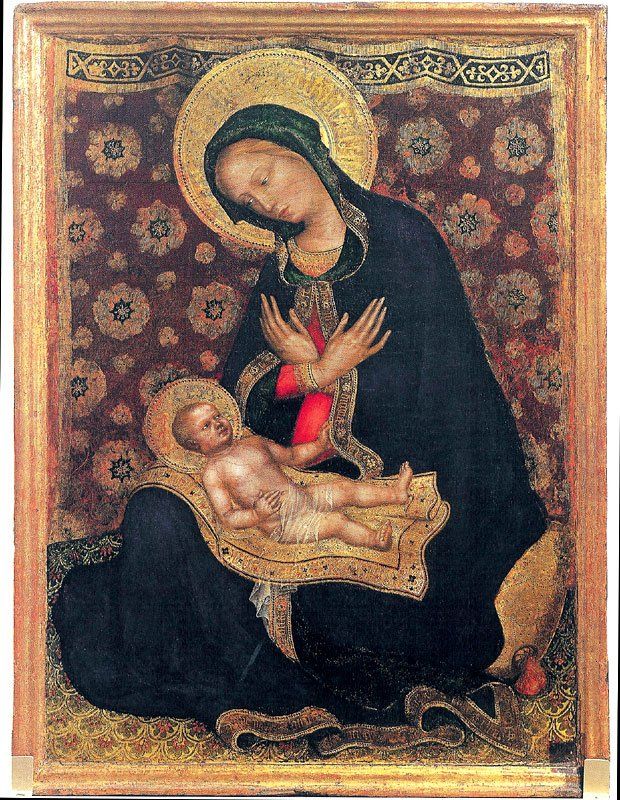
Slide title
Scrivi qui la tua didascaliaButton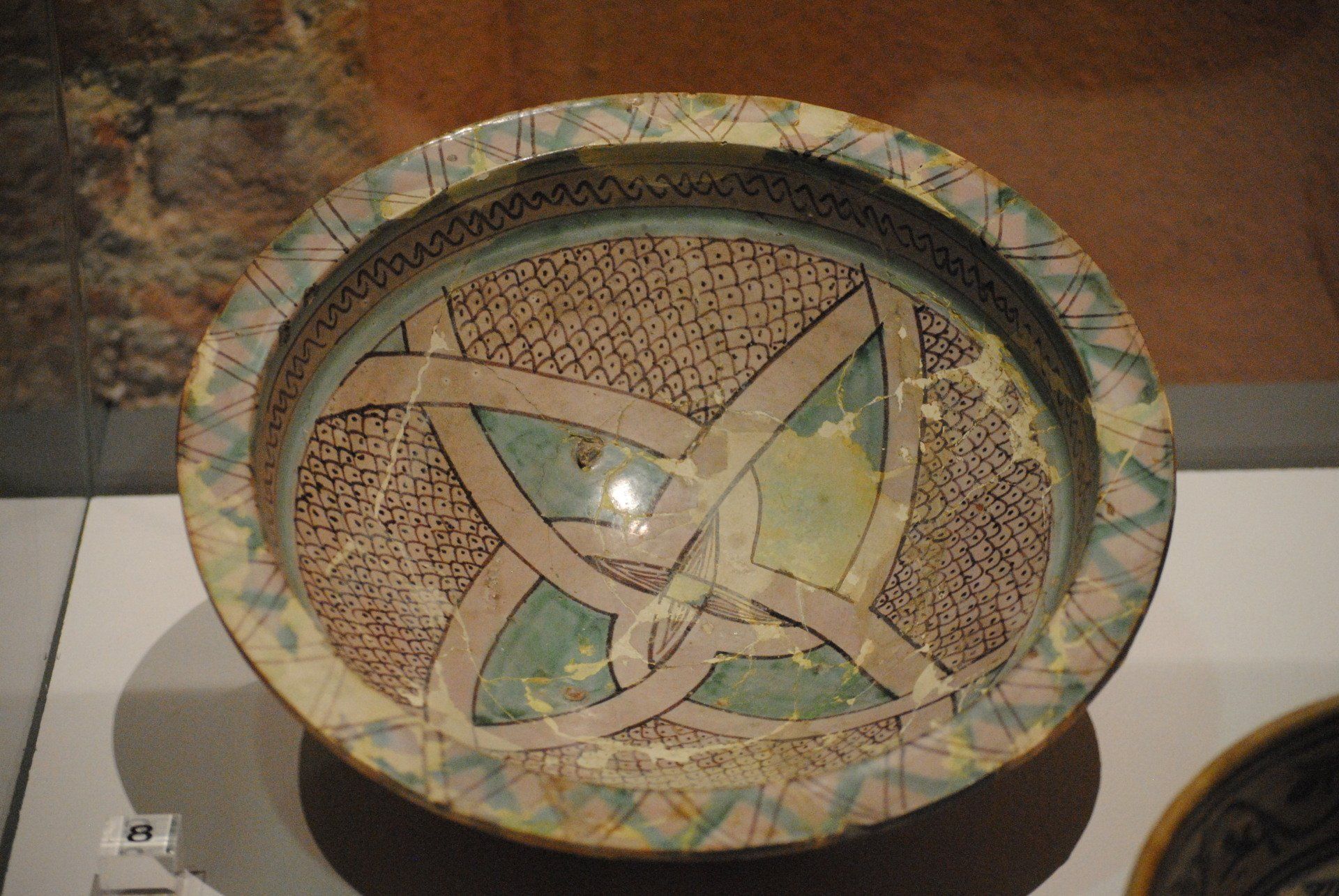
Slide title
Scrivi qui la tua didascaliaButton
-
Pisa - The National Museum of S. Matteo
The museum is housed in the former convent of the Benedictine nuns of the order of St. Matthew, which in 1949 became the seat of Pisa's National Museum.
The collection is largely made up of works originating from religious buildings in Pisa from mediaeval times up to the nineteenth century and of donations from the most important Pisan collectors.
In the museum, a wide range of works of considerable artistic value document the origins of mediaeval painting, an important phase of which was centred around Pisa between the twelfth and the thirteenth centuries.
It has also on exhibit the richest collection in existence of mediaeval Islamic ceramic basins; these were used as decorative features on the outside walls of the Pisan churches of the period. They were made in Mediterranean countries of Islamic culture, and bear witness to the refined production techniques in use from the tenth to the fourteenth century. From the beginning of the thirteenth century they also began to be produced locally.
The Pisan painting of the twelfth and thirteenth centuries is represented by numerous crucifixes and by the works of Berlinghiero Berlinghieri, Giunta di Capitino, known as Pisano, the Tedice family and the Maestro di San Martino, all originating from the oldest churches in the city. The Bible from the Monastery of San Vito, known as the Calci Bible, and the numerous illuminated manuscripts from the beginning of the fourteenth century highlight the central importance of the miniature.
The Pisan sculpture of the twelfth to the fourteenth centuries is amply represented by the Carlo Lasinio collection, with works by sculptors that operated in the circle of Guglielmo and Biduino, by the Madonna and Child by Nicola and Giovanni Pisano, by the slab portraying the Nativity by Tino di Camaino, and by numerous sculptures in wood and marble such as the Madonna del Latte by Andrea and Nino Pisano.
Worthy of note are also some wooden sculptures by Agostino di Giovanni and Francesco di Valdambrino.
Painting of the fourteenth and fifteenth centuries is represented by the works of Simone Martini, including the polyptychfrom the church of Santa Caterina, splendidly restored recently, Francesco di Traino, Lippi Menni, Buonamico Butfalmacco, Spinello Aretino, Taddeo di Bartolo and other great painters of the time. The fifteenth-century collection includes works by famous artists such as Masaccio, with his St. Paul, Gentile da Fabriano, Giovanni da Fiesole, better known as Beato Angelico, Benozzo di Lese, known as Gozzoli, and Domenico Ghirlandaio. This section also includes glazed terracotta works by Andrea Della Robbia, a stucco Madonna and Child by Michelozzo and the extraordinary reliquary-bust of San Lussorio by Donatello.
The galleries exhibiting paintings from the sixteenth to the eighteenth centuries include, among others, works by Santo di Tito, Passignano, Sodoma, Rutilio Manetti, Curradi and Rosselli, as well as the Pisan works of Aurelio Lomi, the Melani brothers and Giovambattista Tempesti.
-
Opening time and tickets
National Museum of San Matteo
Lungarno Medicieo
Tel + 39 050 541865/9711395
from Tuesday to Saturday, from 9:00 to 18:30.
Sundays and holidays from 9:00 to 13:30 (last admission 13:00)
Closed on Mondays.
TICKETS:
Full € 5.00 Reduced € 2.00.
Pisa Visit of the Museum of S. Matteo opening hours and tickets
30/3/2025
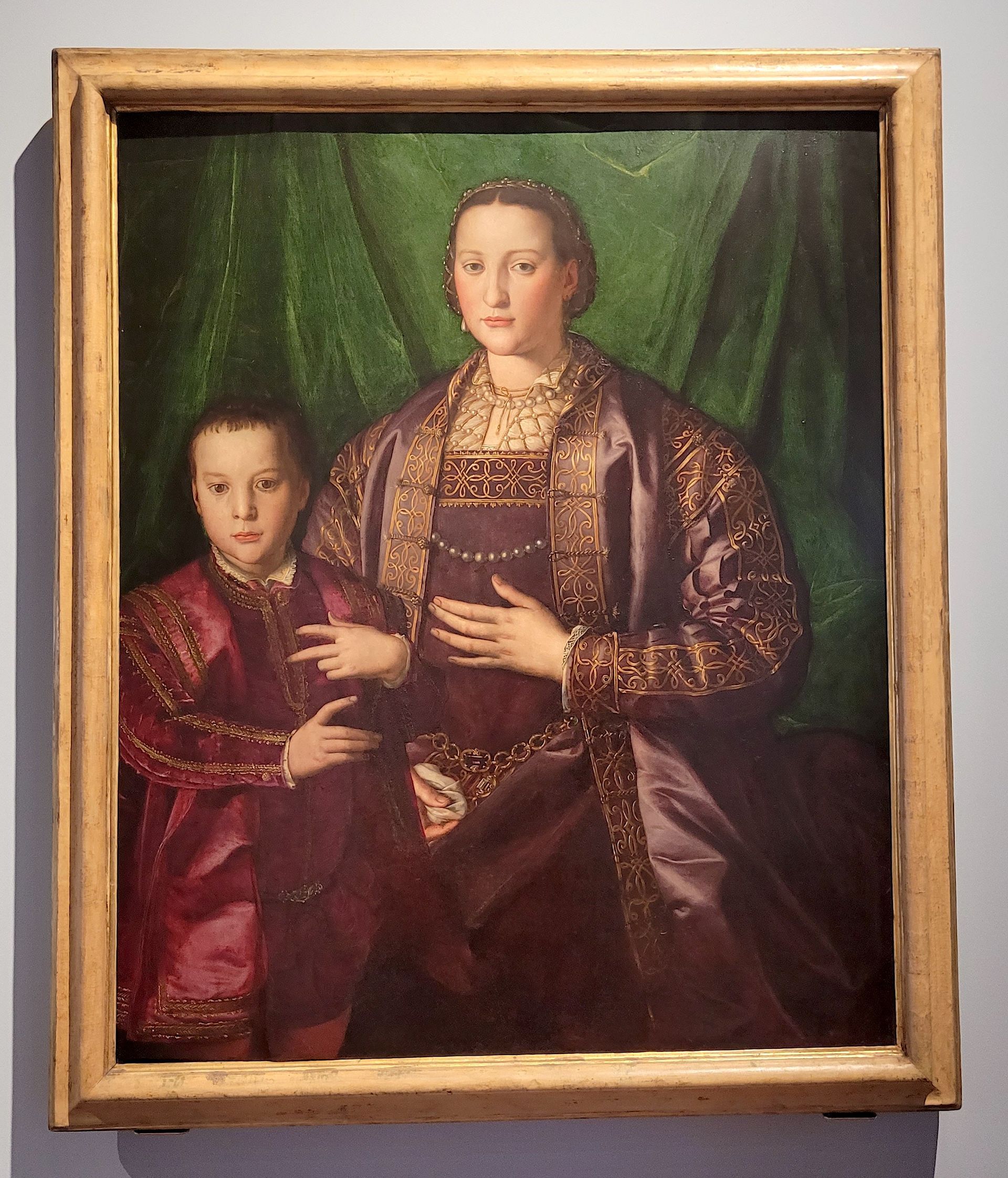
Titolo diapositiva
Scrivi qui la tua didascaliaPulsante
Titolo diapositiva
Scrivi qui la tua didascaliaPulsante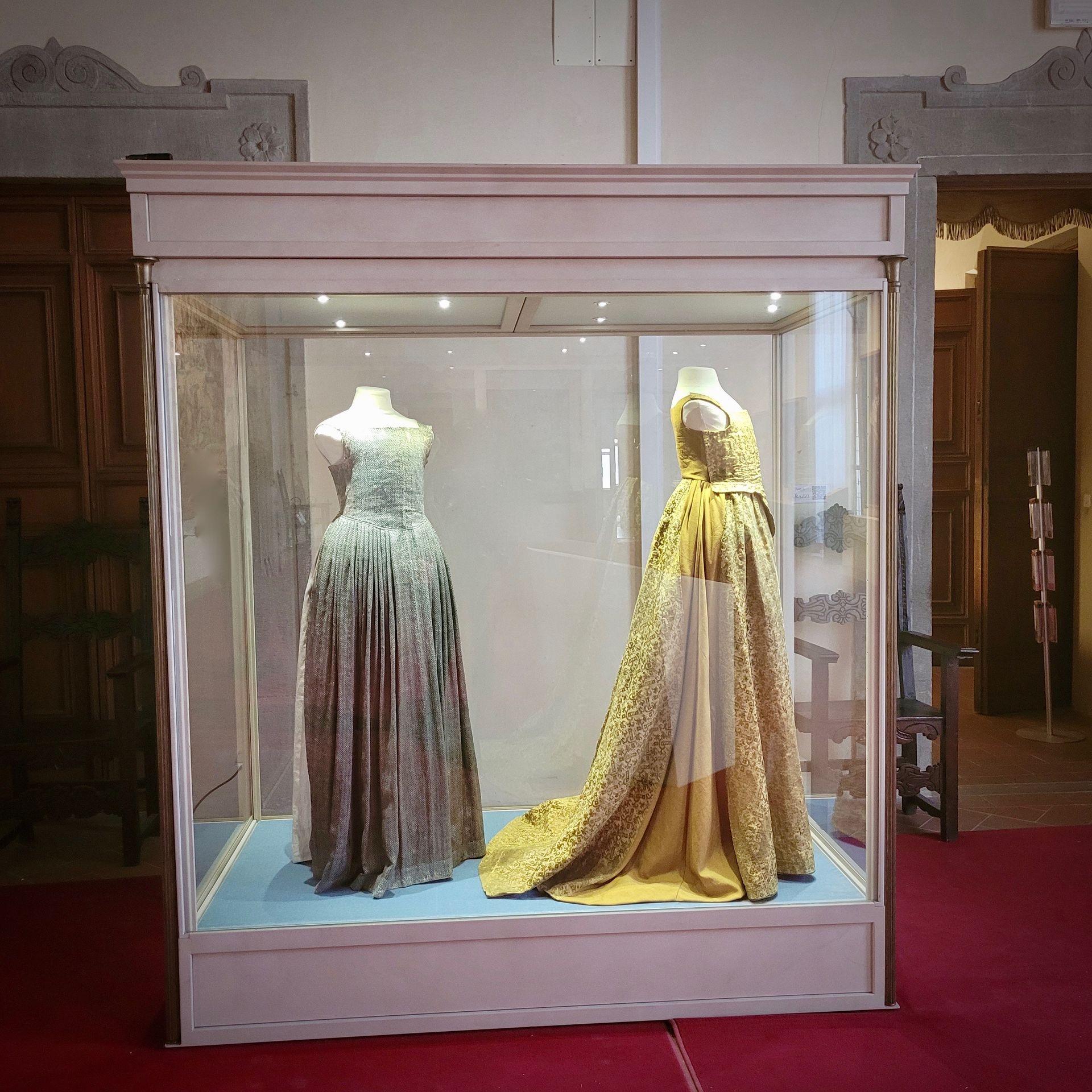
Titolo diapositiva
Scrivi qui la tua didascaliaPulsante
Titolo diapositiva
Scrivi qui la tua didascaliaPulsante
Titolo diapositiva
Scrivi qui la tua didascaliaPulsante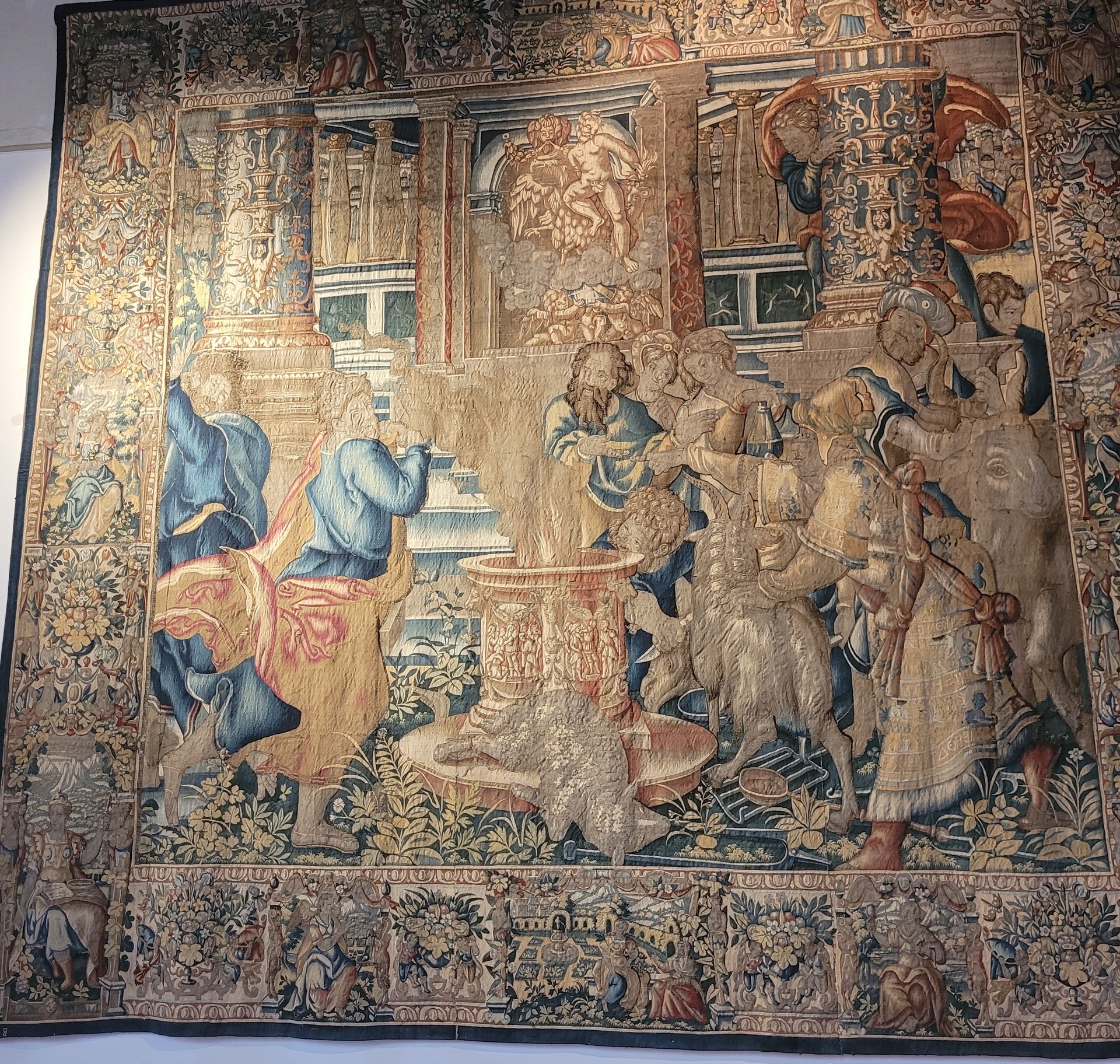
Titolo diapositiva
Scrivi qui la tua didascaliaPulsante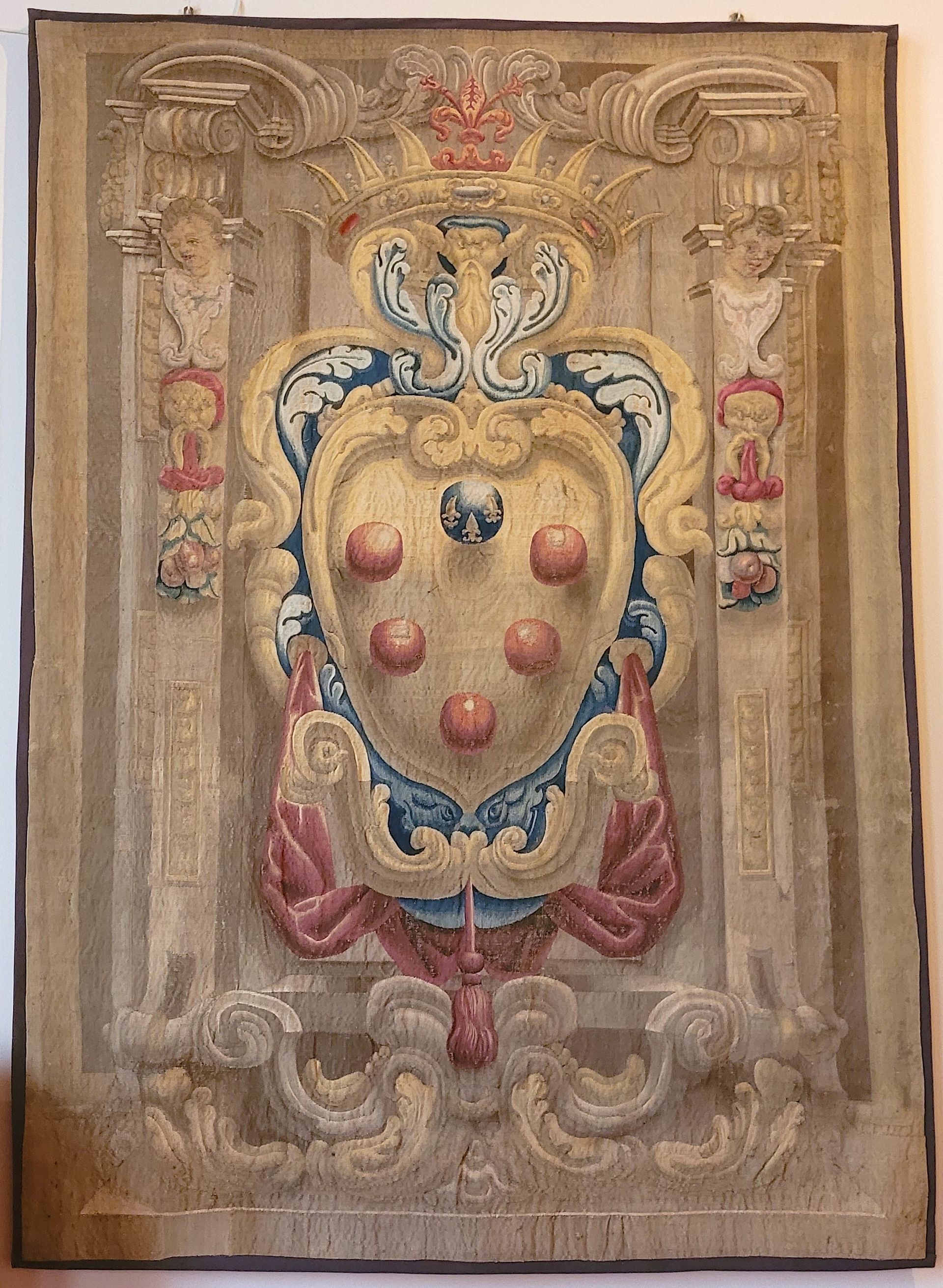
Titolo diapositiva
Scrivi qui la tua didascaliaPulsante
Titolo diapositiva
Scrivi qui la tua didascaliaPulsante
Titolo diapositiva
Scrivi qui la tua didascaliaPulsante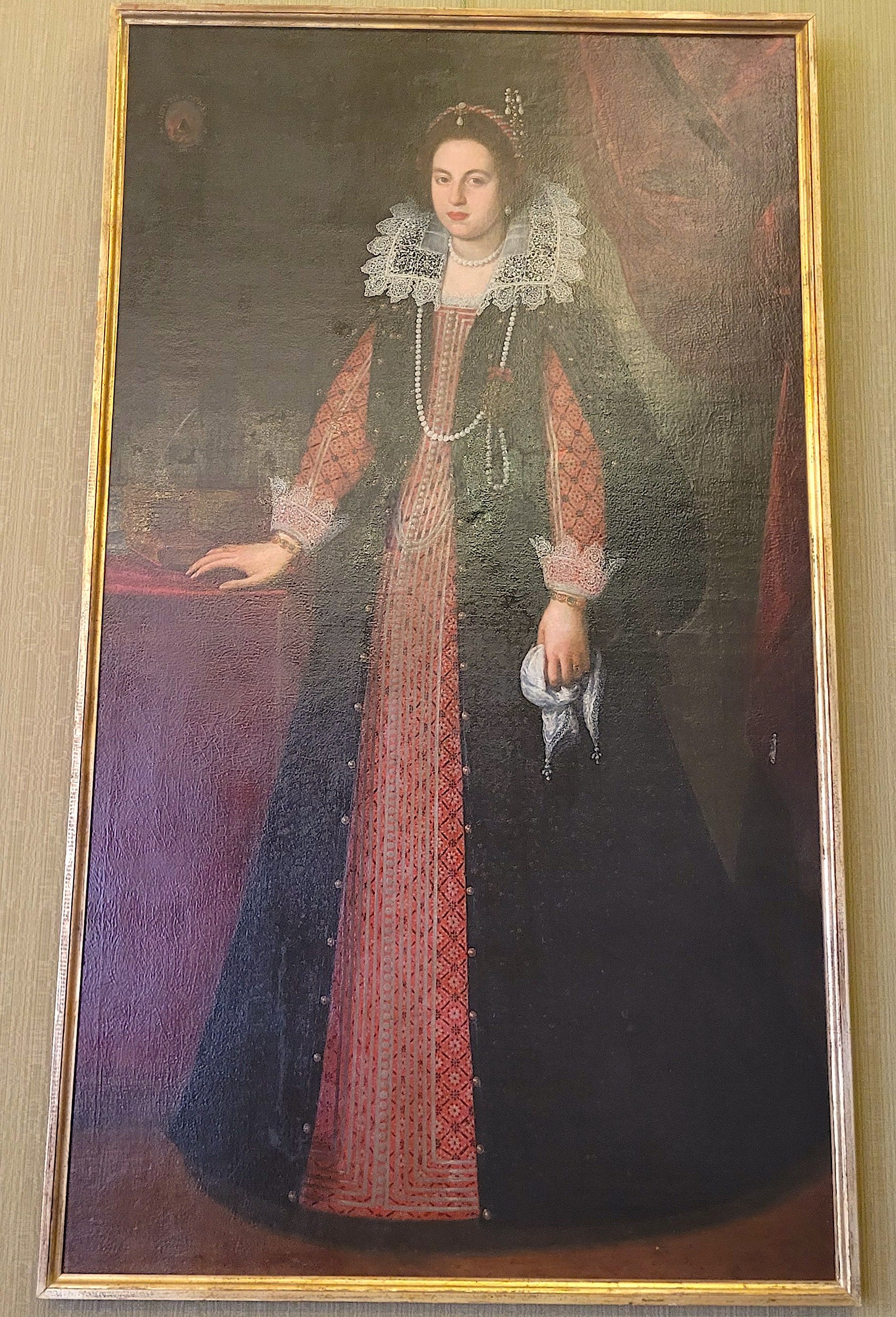
Titolo diapositiva
Scrivi qui la tua didascaliaPulsante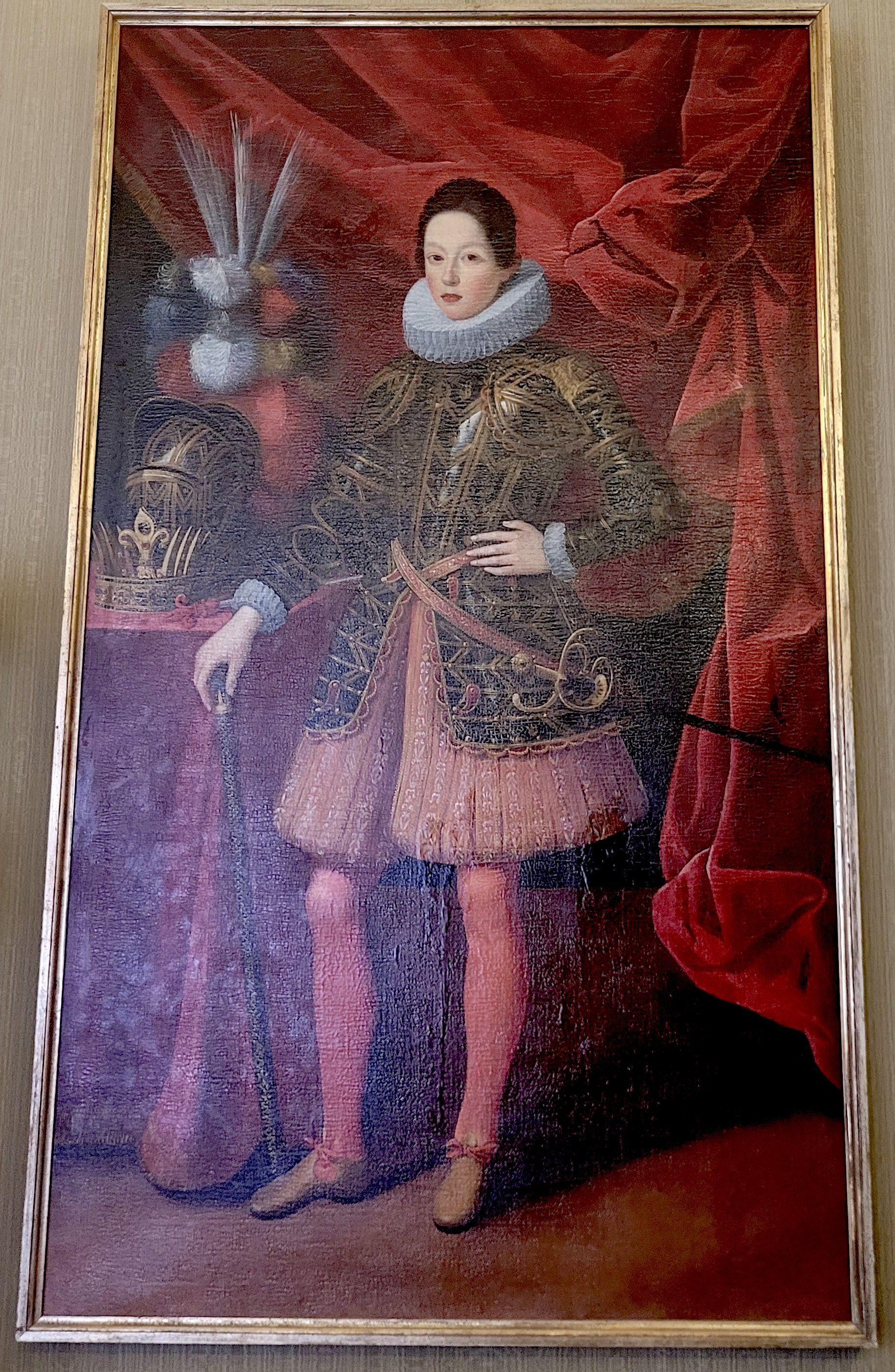
Titolo diapositiva
Scrivi qui la tua didascaliaPulsante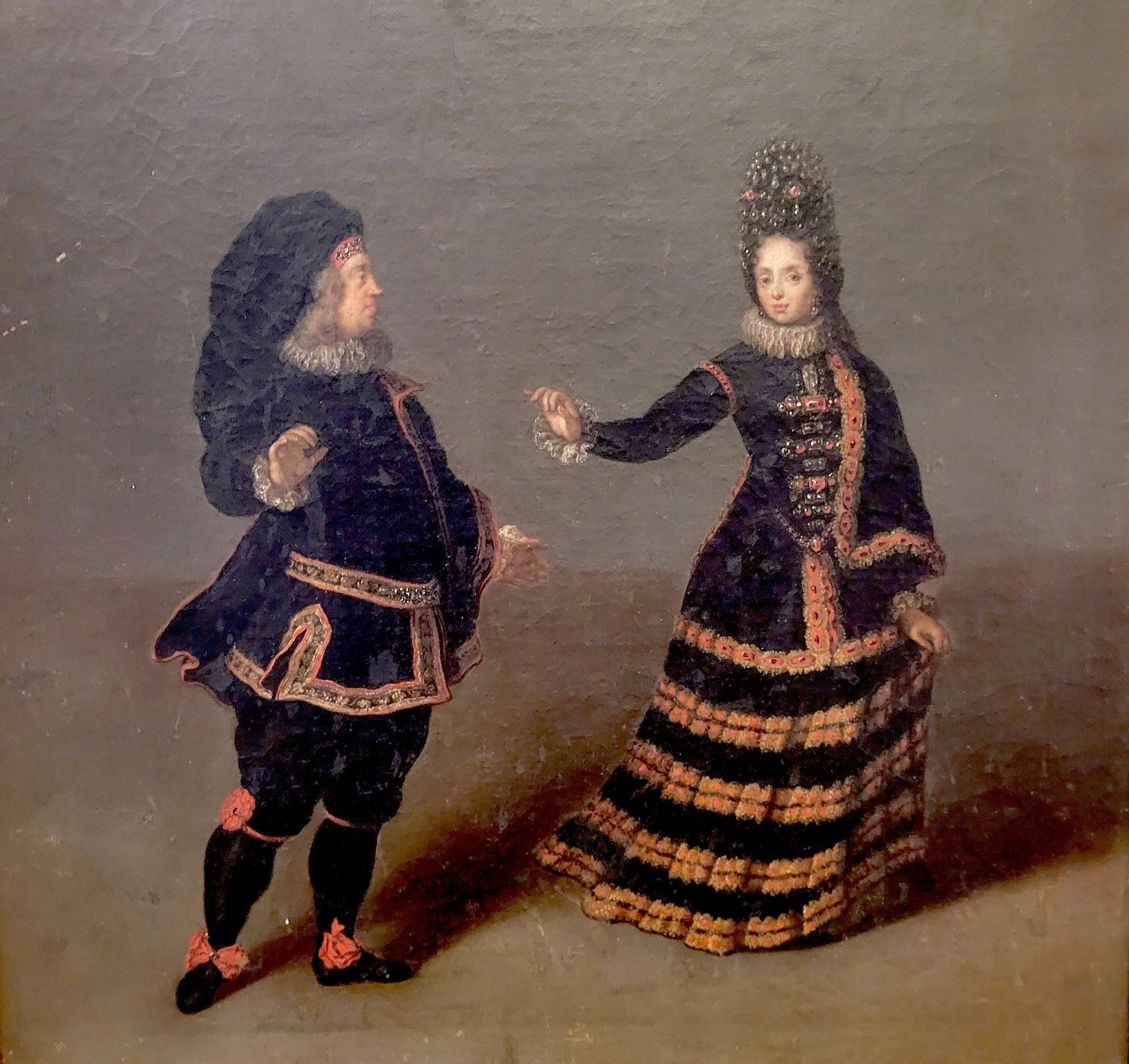
Titolo diapositiva
Scrivi qui la tua didascaliaPulsante
Titolo diapositiva
Scrivi qui la tua didascaliaPulsante
-
Pisa - National Museum of Palazzo Reale
The museum was arranged in 1989 in the palace built by order of Grand Duke Francis I to a design by Buontalenti.
The museum, which occupies 15 rooms, is dedicated to the Court, customs and collections of Pisa from the sixteenth century to the present day. The tapestries and portraits which the Medicis used to adorn the rooms of the palace itself are on show; among them Bronzino's famous portrait of Eleonora di Toledo, Cosimo I de' Medici ’s wife, and Alessandro Allori's portrait of Ferdinando de’ Medici dressed as a cardinal. There are also the portraits of the last of the Medicis and of numerous members of the House of Lorraine, which took over the Grand Duchy of
Tuscany from the Medicis in the first half of the eighteenth century.
The collection of antique armour used in the Bridge Pageant (Gioco del Ponte) is also of particular interest. Il comprises more than 900 pieces of Lombard workmanship, produced between the fifteenth and the eighteenth centuries.
Among the private collections which have come to the museum by various mutes are noteworthy works by Rosso Fiorentino, Guido Reni, Raphael, Canova, including Italian and Flemish paintings by Peter and Jan Bruegel, Van Cleeve, Aensen, Wanverman, miniatures on ivory, medals, porcelain, small bronzes and drawings.
Paintings by Plinio Nomellini, Spartaco Carlini, Galileo Chini and Gianni Bertini are on show as well, together with an exceptional plaster cast gallery and paintings by Italo Griselli, one of the greatest Italian sculptor-portrait painter af the first half of the Twentieth century.
-
Opening time and tickets
National Museum of Palazzo Reale
Lungarno Pacinotti, 46
56126 Pisa
Tel. +39 050 926573 e 3346554259.
Opening time
Tuesday, Wednesday, Thursday, and Saturday: entries at 9:00 AM, 10:30 AM, and 12:00 PM; closing at 1:30 PM.
Friday: entries at 2:00 PM, 3:30 PM, and 5:00 PM; closing at 6:30 PM.
Closed on Monday, Sunday and Holidays.
TICKETS:
Full € 5.00 - Reduced € 2.00
Combined ticket with the Museum of San Matteo: € 8,00 full - € 4.00 reduced
Official Site ☞ Museo Nazionale di Palazzo Reale Pisa
Reductions and free entrance according to rules foreseen for ☞ State Museums.
Pisa - National Museum of Palazzo Reale
30/3/2025
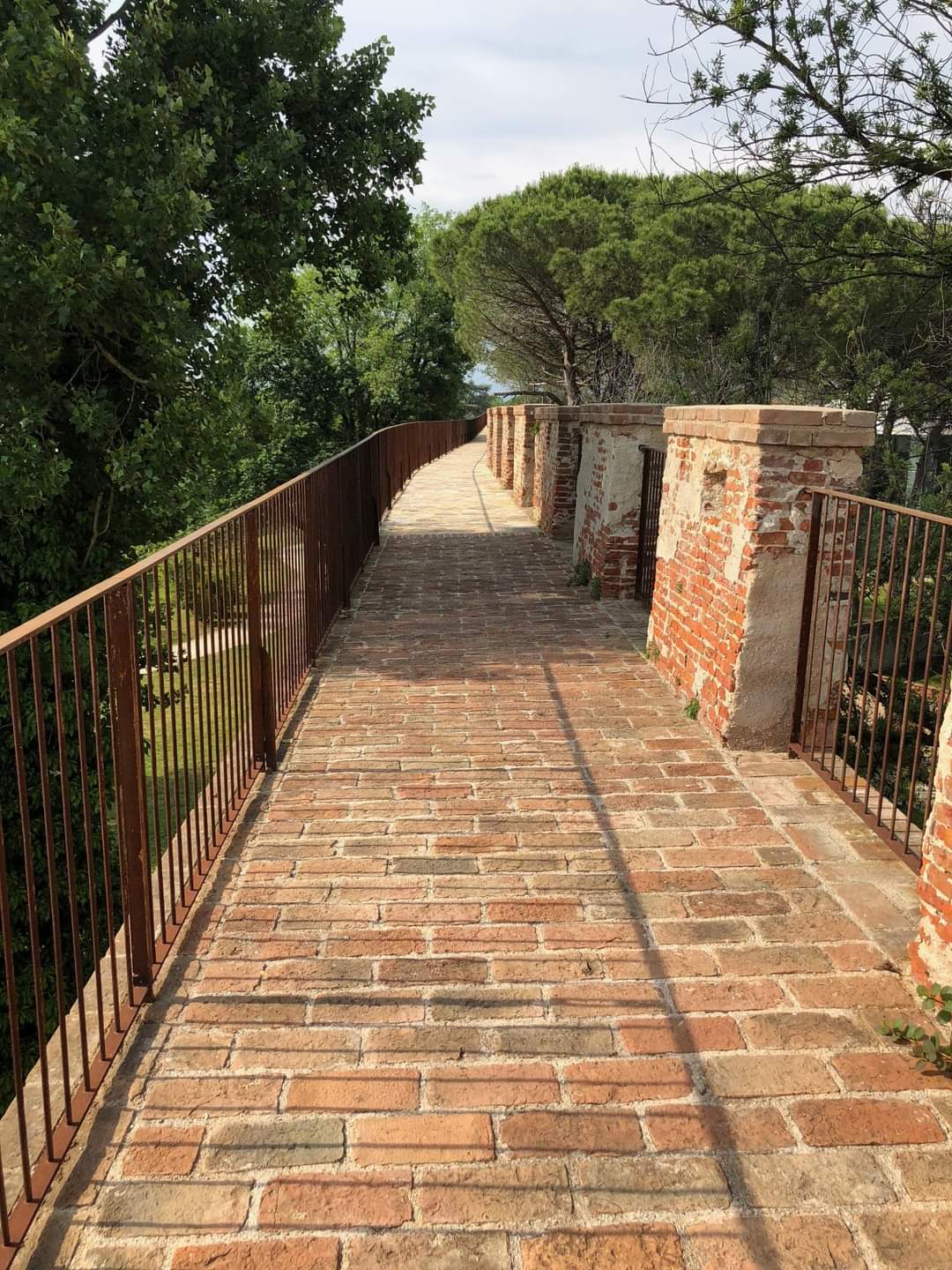
Titolo diapositiva
Scrivi qui la tua didascaliaPulsante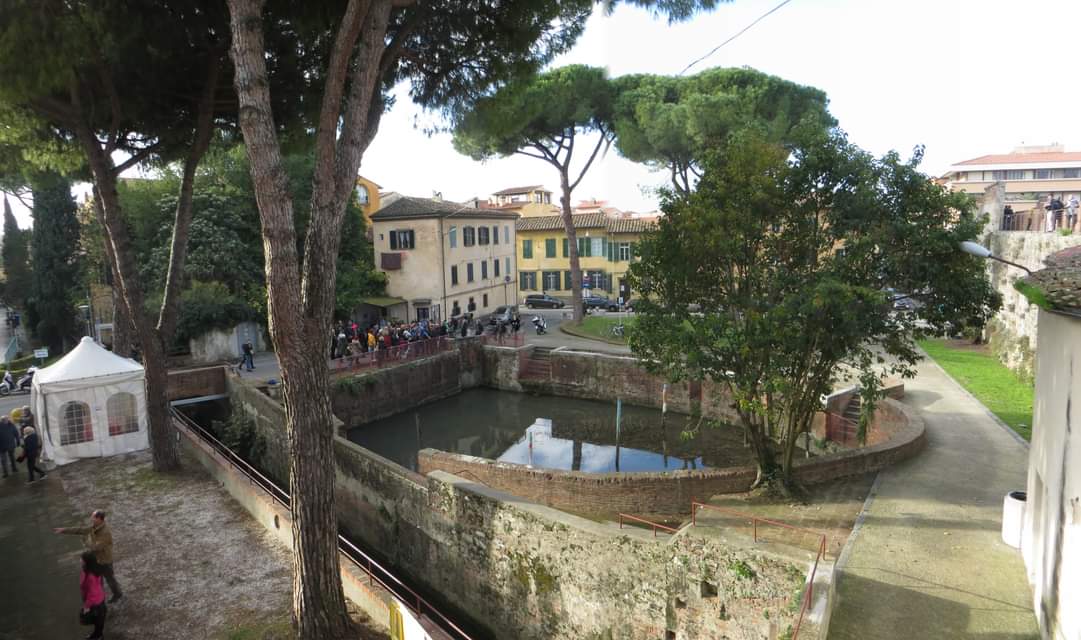
Titolo diapositiva
Scrivi qui la tua didascaliaPulsante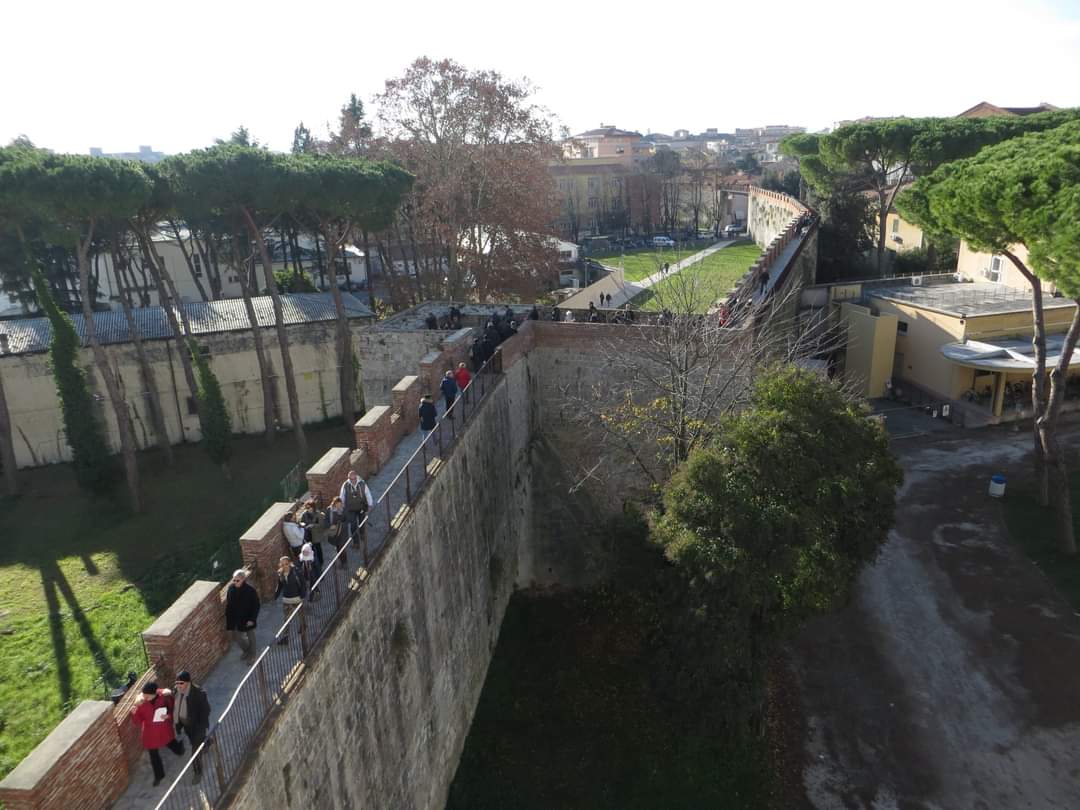
Titolo diapositiva
Scrivi qui la tua didascaliaPulsante
Titolo diapositiva
Scrivi qui la tua didascaliaPulsante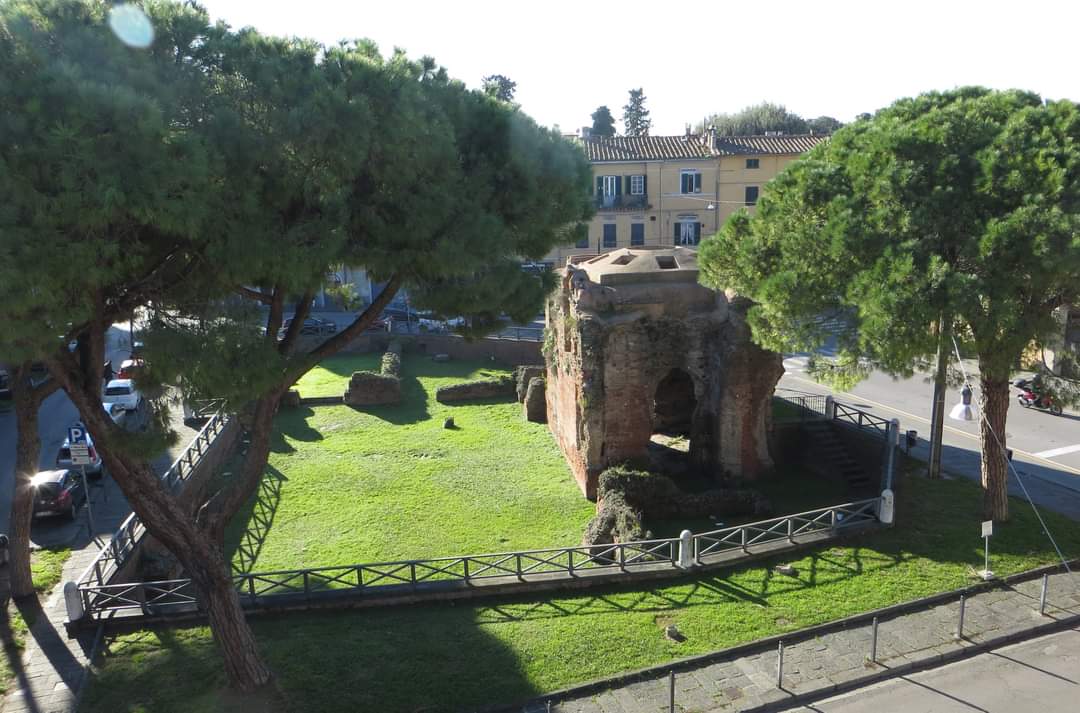
Titolo diapositiva
Scrivi qui la tua didascaliaPulsante
Titolo diapositiva
Scrivi qui la tua didascaliaPulsante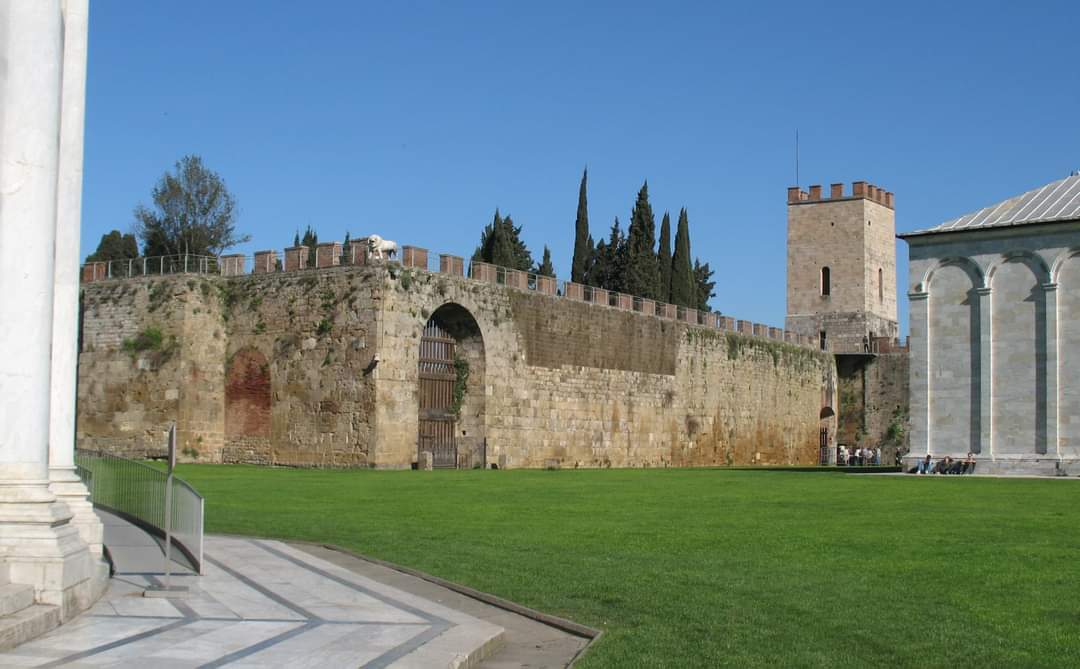
Titolo diapositiva
Scrivi qui la tua didascaliaPulsante
-
Pisa - Walk over the City Walls
Since a few years you can take a leisurely walk on the Walls of Pisa that allows you to see many parts of the city from a different perspective than the usual one. The entire route is about 3 km long of the original 7 km.
The building of the Pisa’s Walls began in 1154, took over about a century and a half, with further addictions that took place after the Florentine occupation between XV and XVI century. The layout of the walls followed the natural elements, above all water courses that lapped and crossed the city centre. Until the second half of XIX century the city Walls remained mostly unchanged; later, with the expansion of the city significant demolitions of the walls took place.
In most of the circuit of the walls there was still the Via Murorum, that is the space left free both inside and outside, represented by areas or public street open to all signed with boundary stones planted in the ground at a distance of about 5.25 meters inside and about 14 meters outside the walls. Between the first years of XX century until 1960, many of these areas were occupied, outside and inside the walls, by vegetable gardens, gardens and buildings.
-
Opening Time and Tickets
Opening time
From November to February: every day from 10 AM to 5 PM (last entry at 4:30 PM)
March: every day from 10 AM to 6 PM (last entry at 5:30 PM)
From April to August: every day from 10 AM to 8 PM (last entry at 7:30 PM)
September: every day from 10 AM to 7 PM (last entry at 6:30 PM)
October: every day from 10 AM to 6 PM (last entry at 5:30 PM)
Closed only on December 25th
For safety reasons the route closes in case of bad weather such as rain and strong wind.
Access and exit from Torre Santa Maria in Piazza Duomo, Torre Piezometrica, Piazza delle Gondole, Torre di Legno
Access and exit for disabled people at Torre Piezometrica, Piazza delle Gondole, Torre di Legno
For people with disabilities, ascent and descent possible at the Piezometric Tower, in Piazza delle Gondole and at the Torre di Legno
Ticket can be bought at the entrances
Ticket: € 5.00
The route is also accessible with small and medium-sized dogs, on a leash and wearing a muzzle.
Further information:
30/3/2025
Pisa Walk over the City Walls - short description, Opening time and tickets
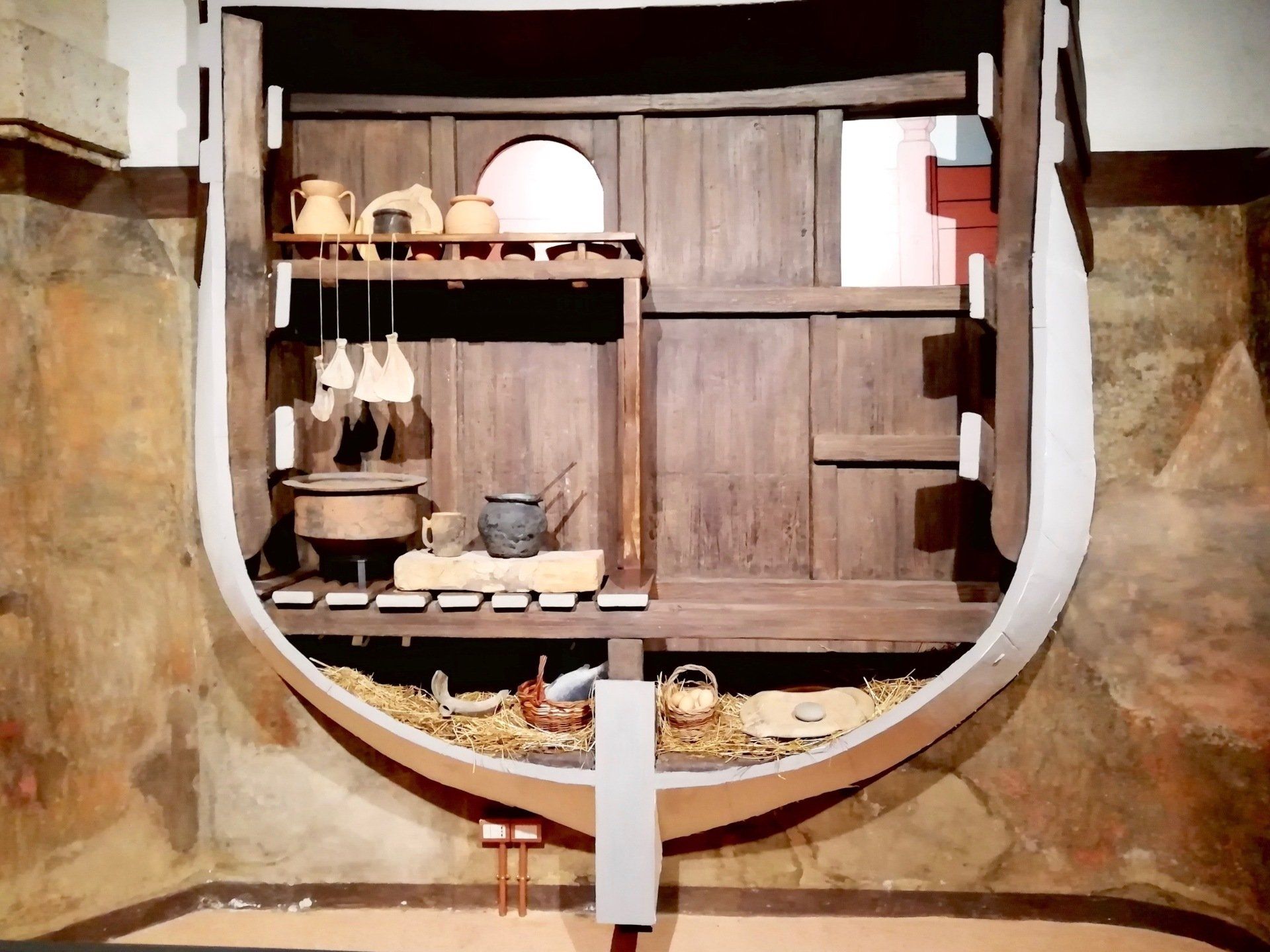
Slide title
Scrivi qui la tua didascaliaButton
Slide title
Scrivi qui la tua didascaliaButton
Slide title
Scrivi qui la tua didascaliaButton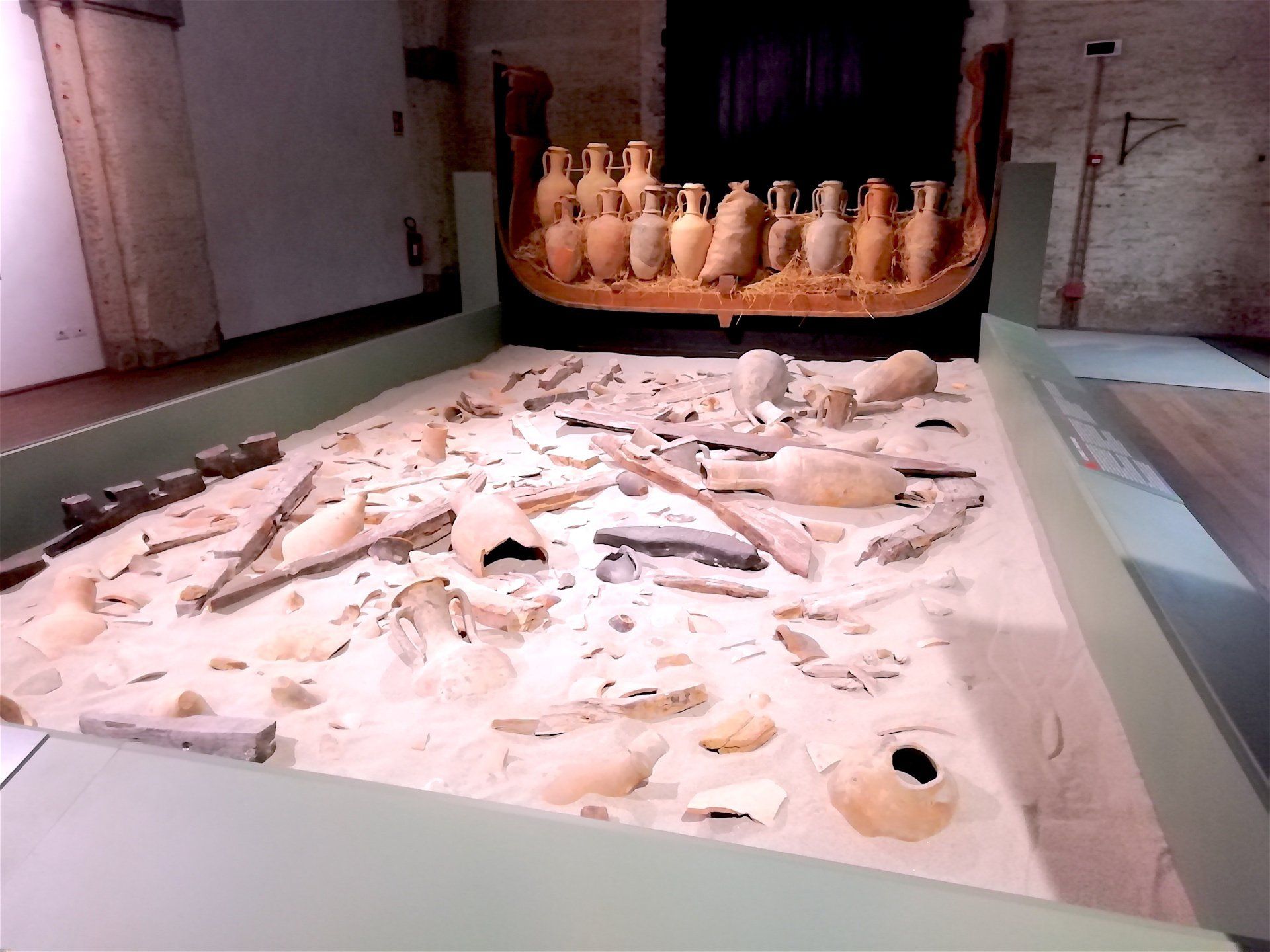
Slide title
Scrivi qui la tua didascaliaButton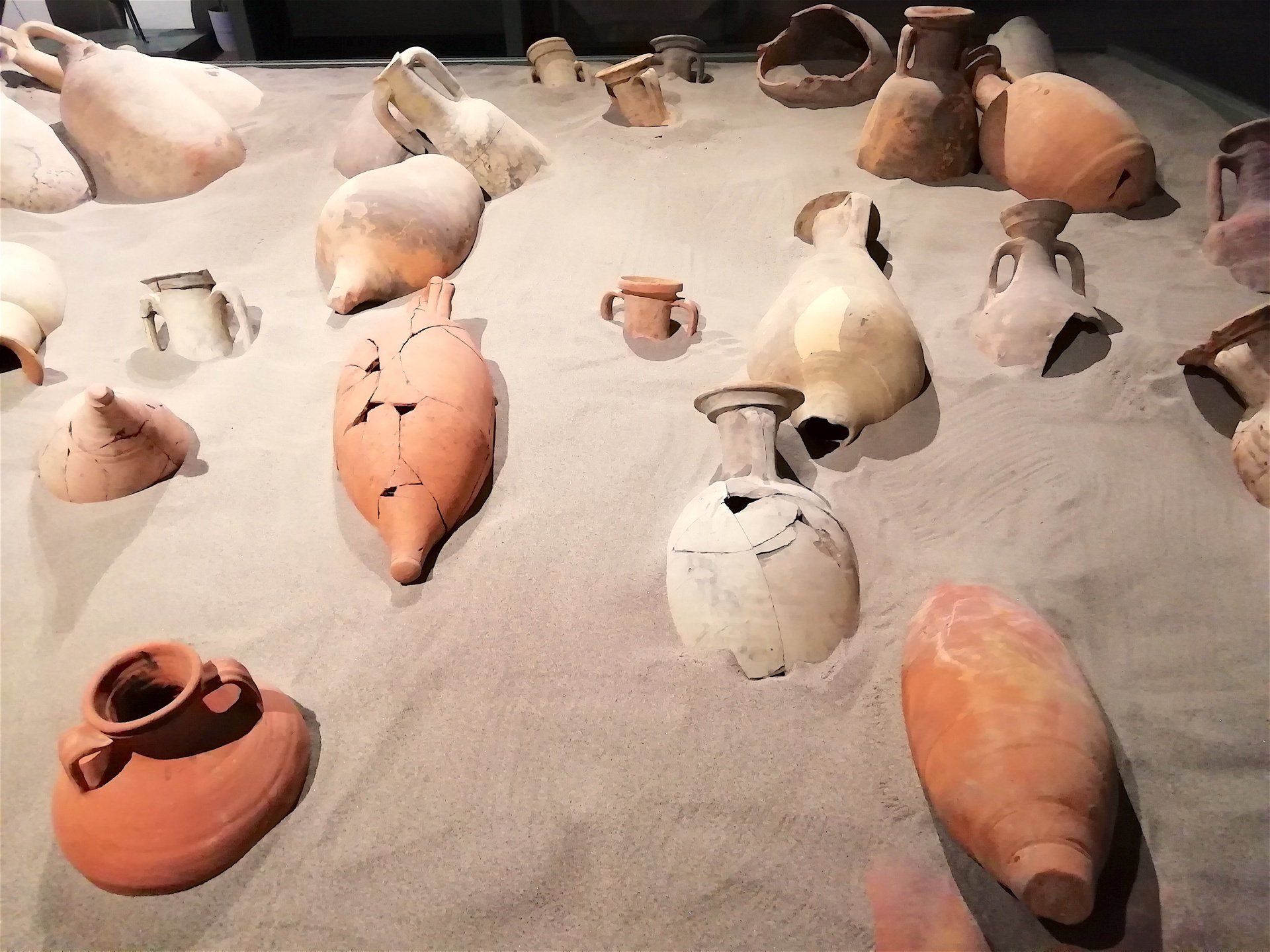
Slide title
Scrivi qui la tua didascaliaButton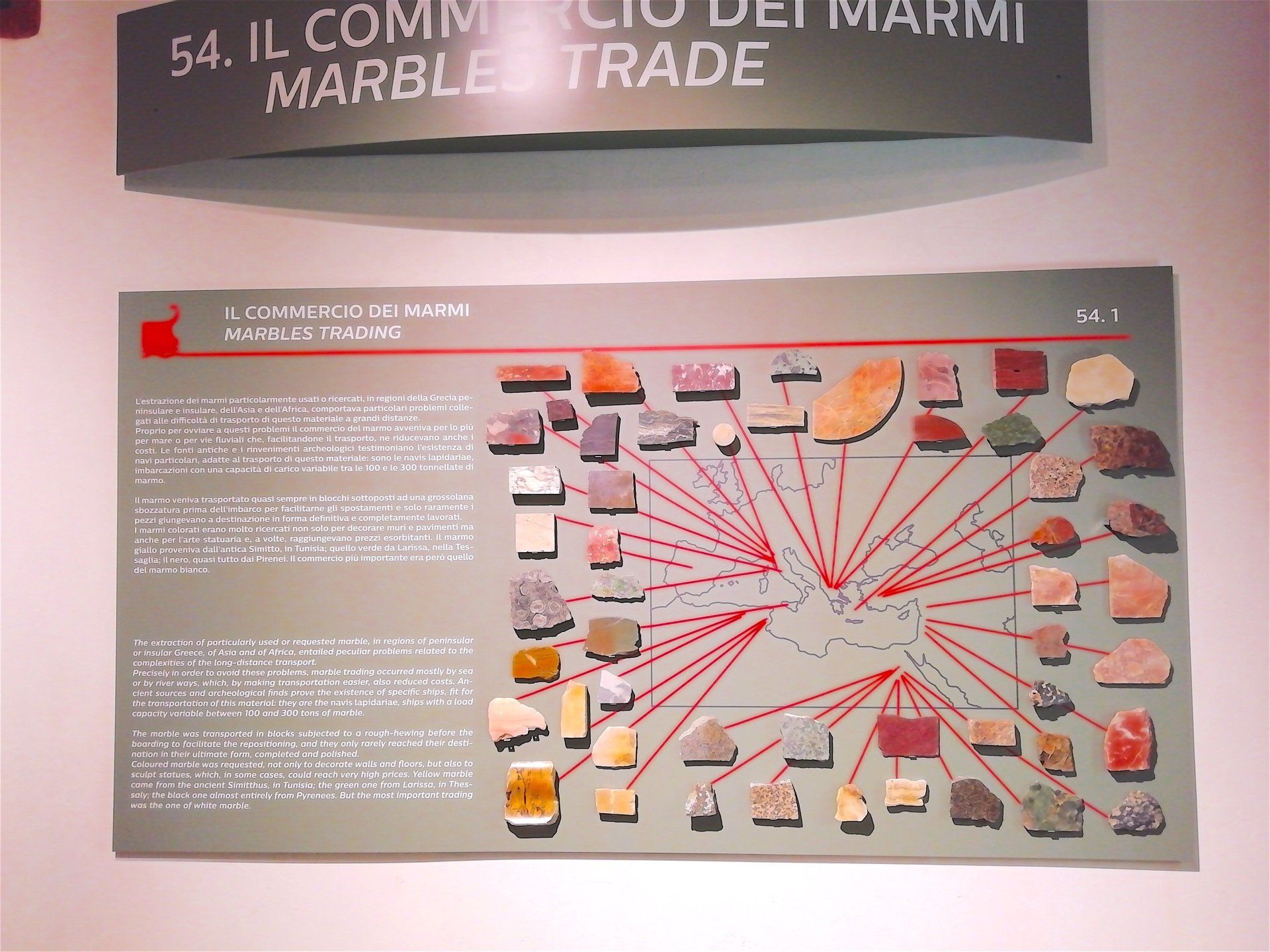
Slide title
Scrivi qui la tua didascaliaButton
-
Pisa - the Museum of Ancient Ships
In 1998, close to Pisa S. Rossore station, the Italian Railways started the construction works to build a train control center. Immediately some wooden objects began to be unearthed and the archaeologists realized the immense value of this discovery.
In particular, what emerged 6 meters underground was an incredible series of ship wreckages, including their loads of commercial items and various remnants of life on board, in an extraordinary state of preservation.
The excavation site of Ancient Roman ships of Pisa, originated from this discovery, was completed in 2016 and it brought to light about thirty Roman boats and thousands of fragments of pottery, glass, metal and traces of organic materials.
The strenuous work of archaeologists and conservators has recreated the mosaic of a long history, consisting of trades and sailors, voyages and routes, daily life on board and shipwrecks.
These archaeological finds are displayed in the exhibition of “Le Navi Antiche di Pisa” that takes place in the majestic rooms and aisles of the “Arsenali Medicei” (the Medicean Arsenals), along the Arno river, restored for thes purpose.
Originally the Arsenals were built as warehouse for the construction and maintenance of the boats used by the Knights of the Order of Santo Stefano (Saint Stephen) who had to face and contrast the Saracenic expansion over the Mediterranean Sea. The Arsenals in Pisa soon became neglected and became storerooms linked to defensive purposes of the nearby Citadel and afterwards cavalry barracks.
This splendid context and the exhibits on display and well illustrated by captions in Italian and English, make the visit particularly informative and enjoyable, not only for adults, but also for school-age children.
Really to recommend.
Museum of Ancient Ships
Medicean Arsenals
Lungarno Ranieri Simonelli, 16
56126 Pisa PI
-
Opening time and tickets
Museum of Ancient Ships
Medicean Arsenals
Lungarno Ranieri Simonelli, 16
56126 Pisa PI
Tickets:
full € 8.00
reduced € 2.00
Information about updated opening times: https://www.navidipisa.it
Really to recommend.
30/3/2025
Pisa The Museum of Ancient Ships timetables and entrance tickets

Titolo diapositiva
Scrivi qui la tua didascaliaPulsante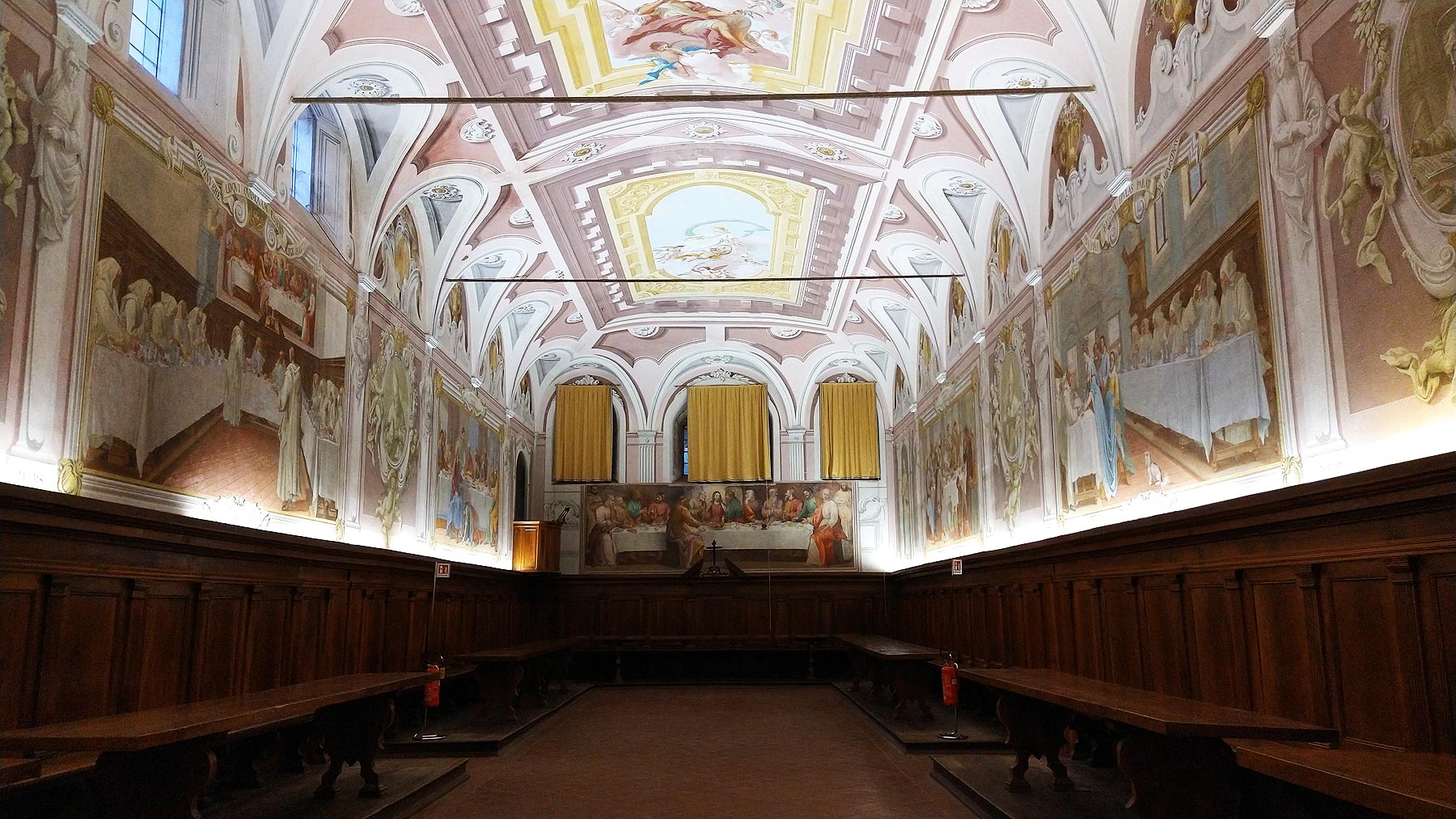
Titolo diapositiva
Scrivi qui la tua didascaliaPulsante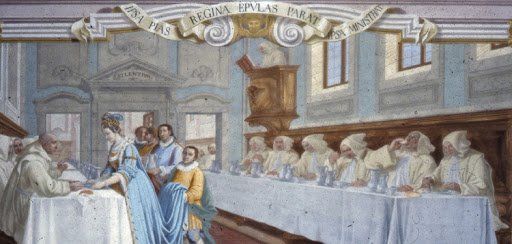
Titolo diapositiva
Scrivi qui la tua didascaliaPulsante
-
Calci, Pisa - The Charterhouse
Calci, Pisa - The Charterhouse
The Pisa Charterhouse in Calci is a vast monumental complex that rises on the slopes of Monte Pisano, a few kilometers from Pisa. Founded in 1366 by a Carthusian family, the complex was enlarged between the seventeenth and eighteenth centuries and today is a splendid Baroque monument set in a highly suggestive landscape. Originally called "dark", the Calci valley was renamed Val Graziosa (full of grace) following the foundation of the monastic complex.
Today the Charterhouse hosts two distinct museums: the Charterhouse, abandoned by the few remaining monks in 1972, became the National Museum of the Monumental Charterhouse of Calci; while in 1979 the western part of the complex was granted in perpetual and free use to the University of Pisa, which founded the Natural History Museum of the University of Pisa.
The presence of the two museums within the Charterhouse complex certainly make it a unique reality on the national scene, an exceptional place where amazement and enchantment mix with science, history, art and nature. Although the two museum institutions are located in different parts of the complex and have two different thematic and educational profiles, their apparently so different events and collections are inextricably intertwined with the fascinating history of the building that houses them.
The visit to the National Museum is an evocative journey into the world of the Carthusians, in environments that still amaze today with their magnificence and splendor of the decorations. The Certosa looks like a beautiful baroque style church with valuable frescoes and many paintings housed in the various chapels adorned with stuccos, statues and various vestments. The tour of the Certosa lasts about a couple of hours and is bound by a guided tour at a cost of € 5 per person, with the possibility of free admission for some categories. The guide will illustrate the moments of the monks' day, discovering the solitary life they led, made up of rigor, meditation and contemplation. You can visit the apartments, the refectory for Sunday lunches, the garden, the monumental cloister and many other rooms, one more beautiful than the other.
-
Opening times and entrance tickets
Guided tours in Italian are possible from Tuesday to Sunday, with reservations required on +39 050 938430
Admission only with guided tours in Italian, booking required, conducted by museum staff at the following times:
Tuesday, Wednesday, Sunday, and public holidays: entries at 9:00 AM, 10:00 AM, 11:30 AM, 12:30 PM.
Thursday, Friday, and Saturday: entries at 2:00 PM, 3:30 PM, 5:00 PM, 6:00 PM.
Tickets: Full € 5.00. Reduced € 2.00
Calci, Pisa - The Charterhouse
30/3/2025
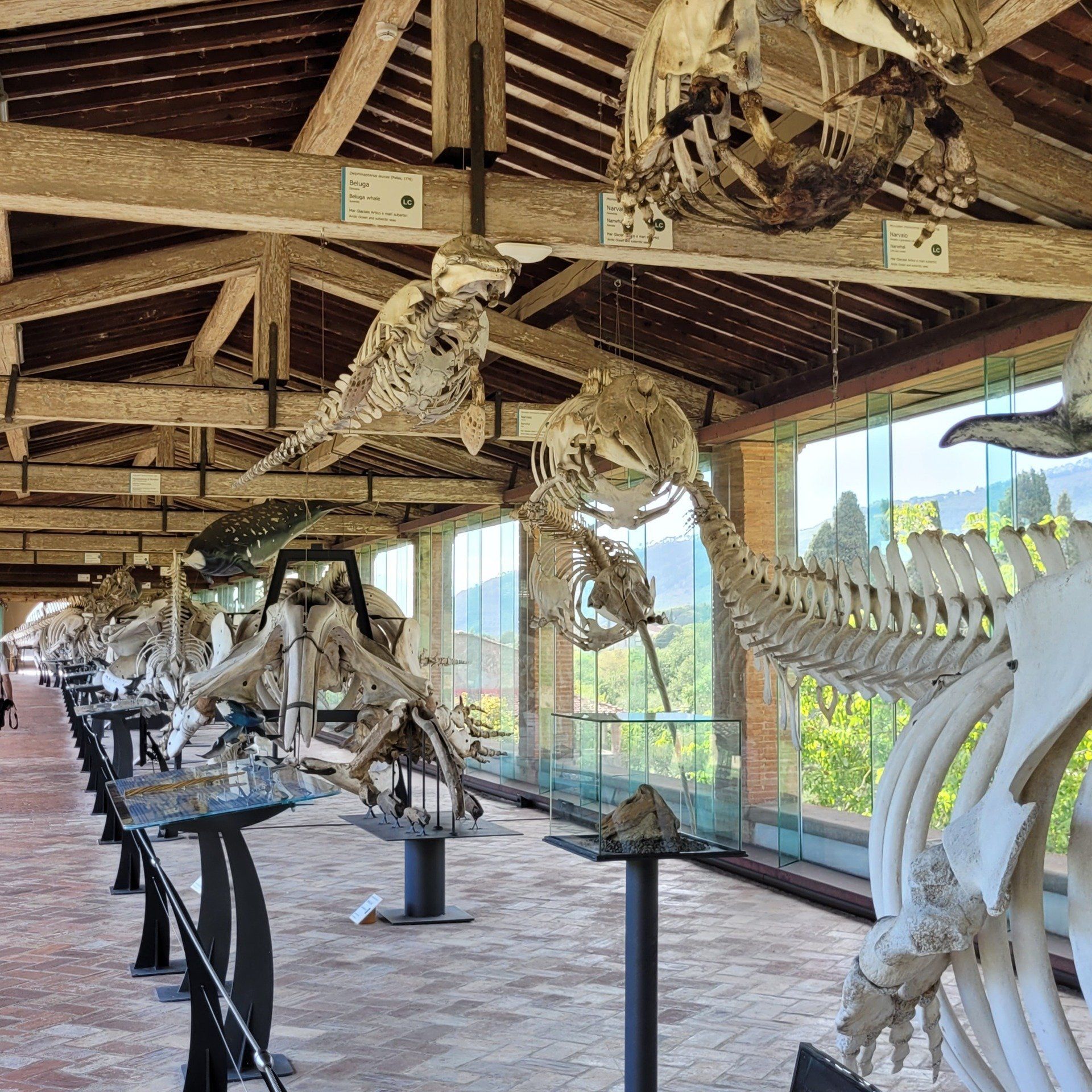
Titolo diapositiva
Scrivi qui la tua didascaliaPulsante
Titolo diapositiva
Scrivi qui la tua didascaliaPulsante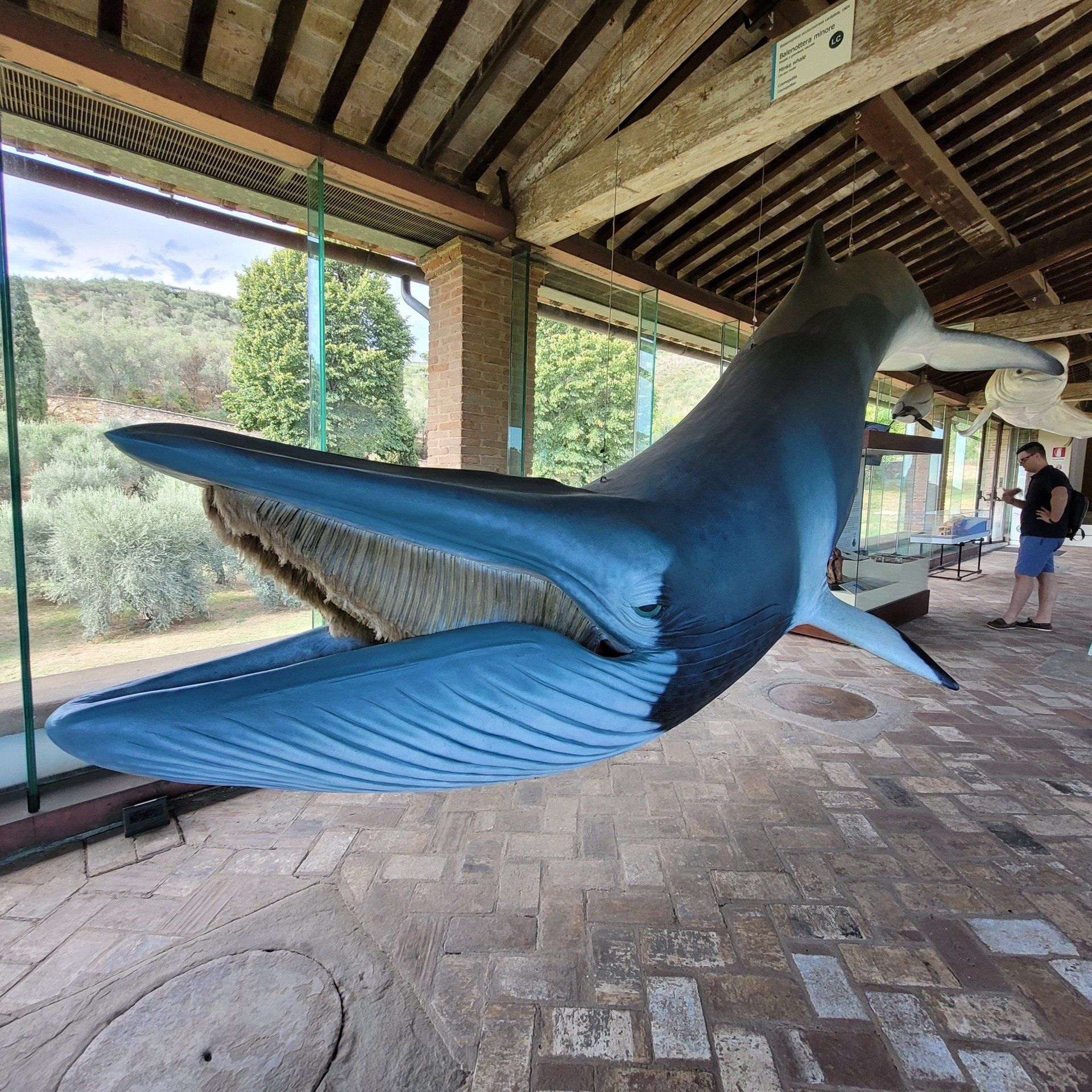
Titolo diapositiva
Scrivi qui la tua didascaliaPulsante
Titolo diapositiva
Scrivi qui la tua didascaliaPulsante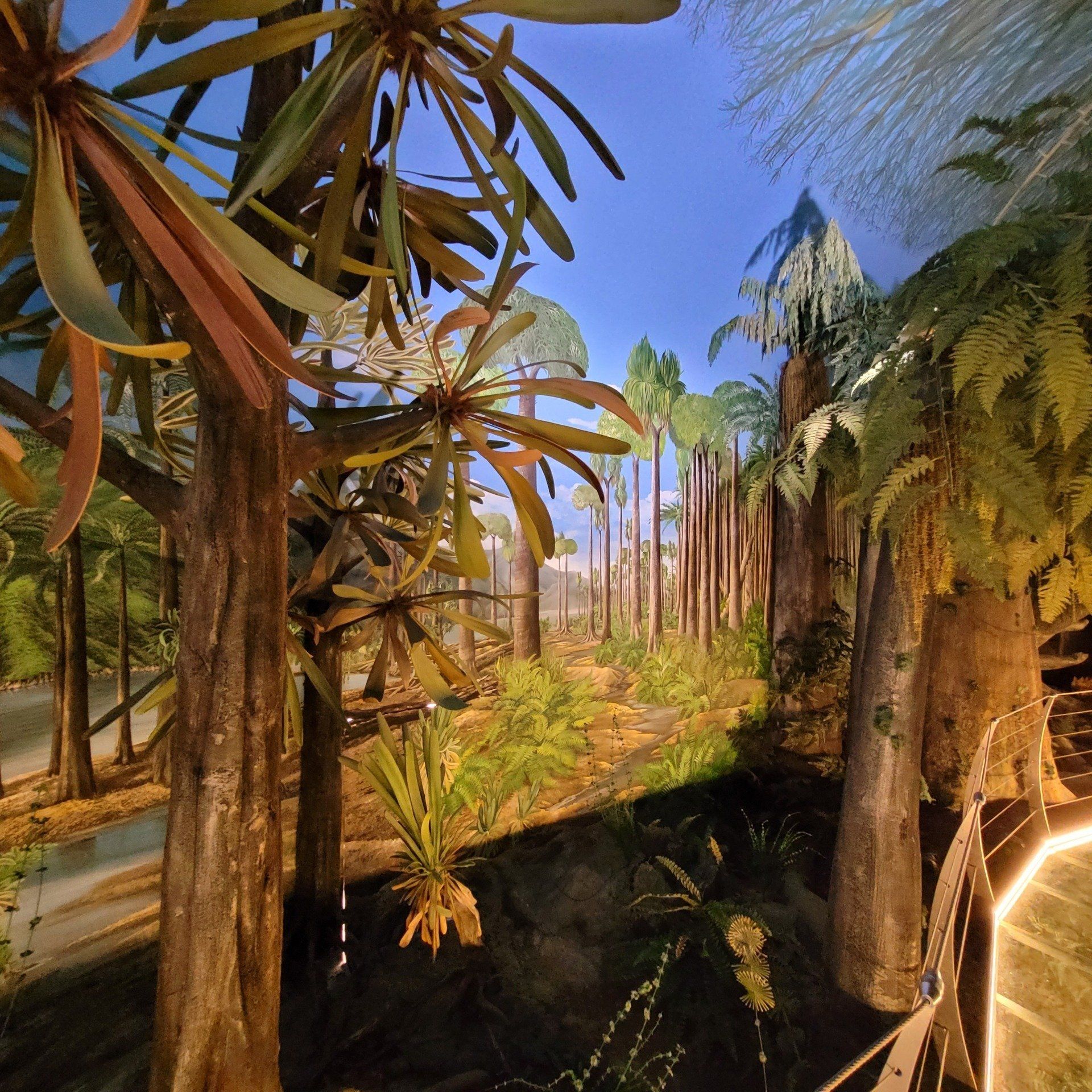
Titolo diapositiva
Scrivi qui la tua didascaliaPulsante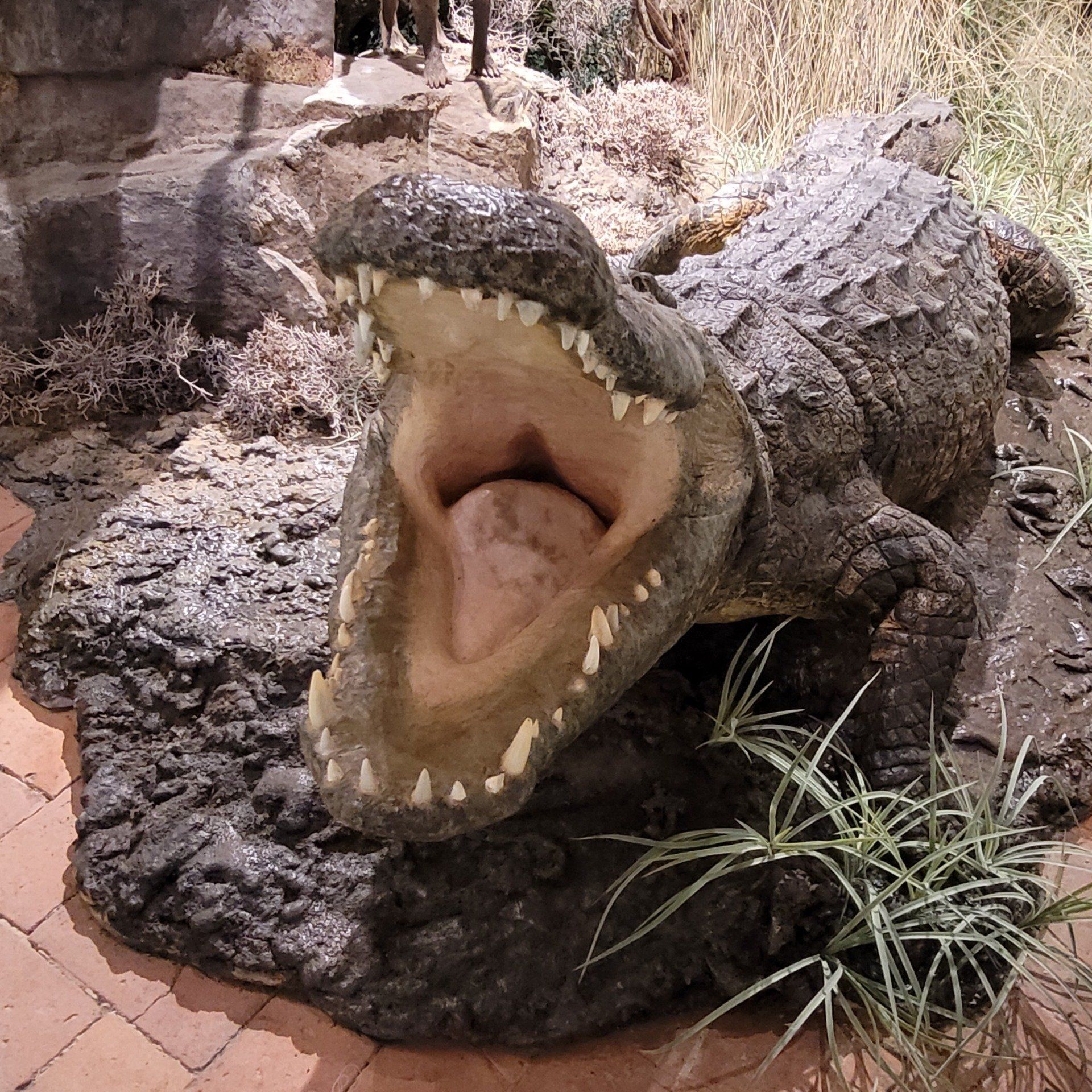
Titolo diapositiva
Scrivi qui la tua didascaliaPulsante
Titolo diapositiva
Scrivi qui la tua didascaliaPulsante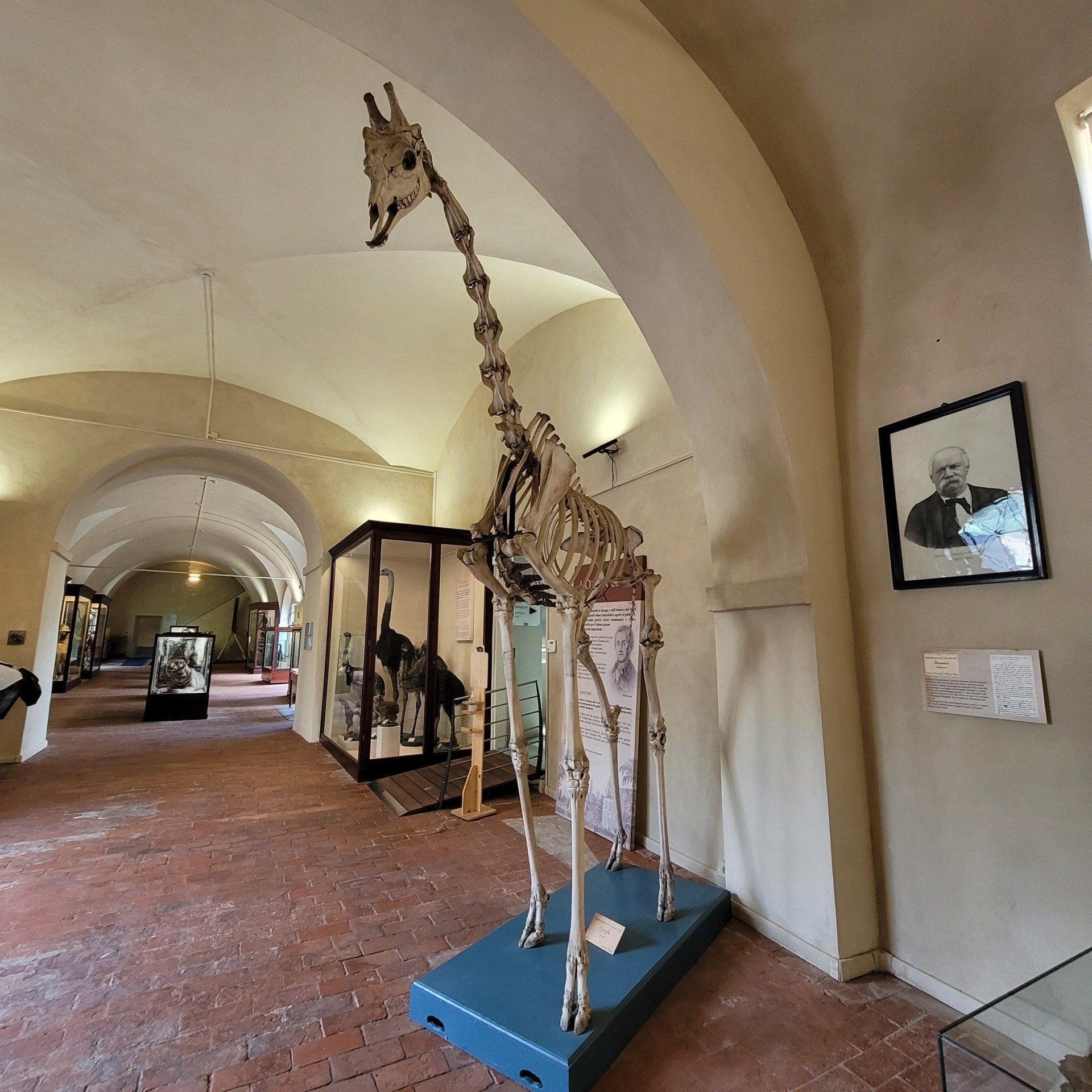
Titolo diapositiva
Scrivi qui la tua didascaliaPulsante
Titolo diapositiva
Scrivi qui la tua didascaliaPulsante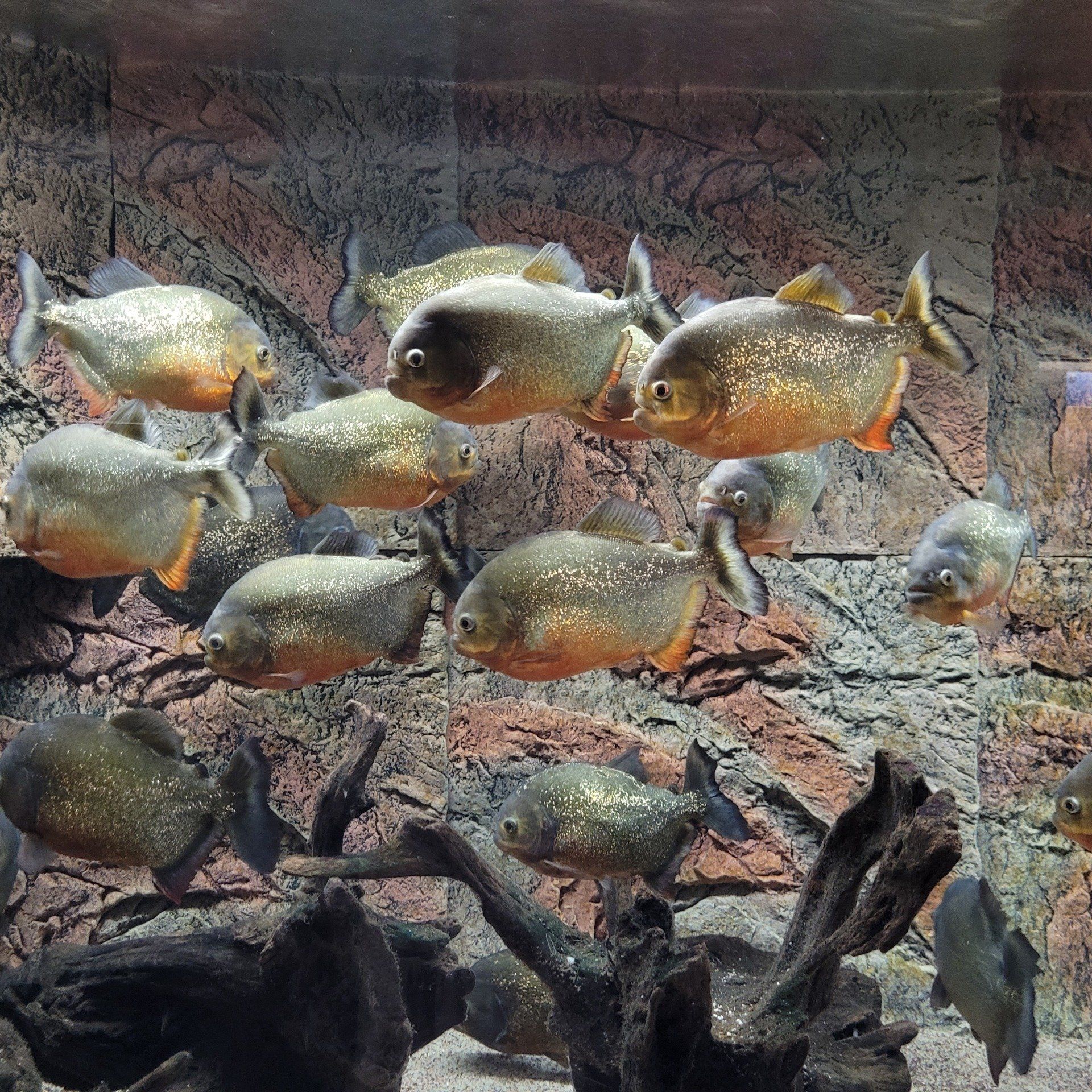
Titolo diapositiva
Scrivi qui la tua didascaliaPulsante
Titolo diapositiva
Scrivi qui la tua didascaliaPulsante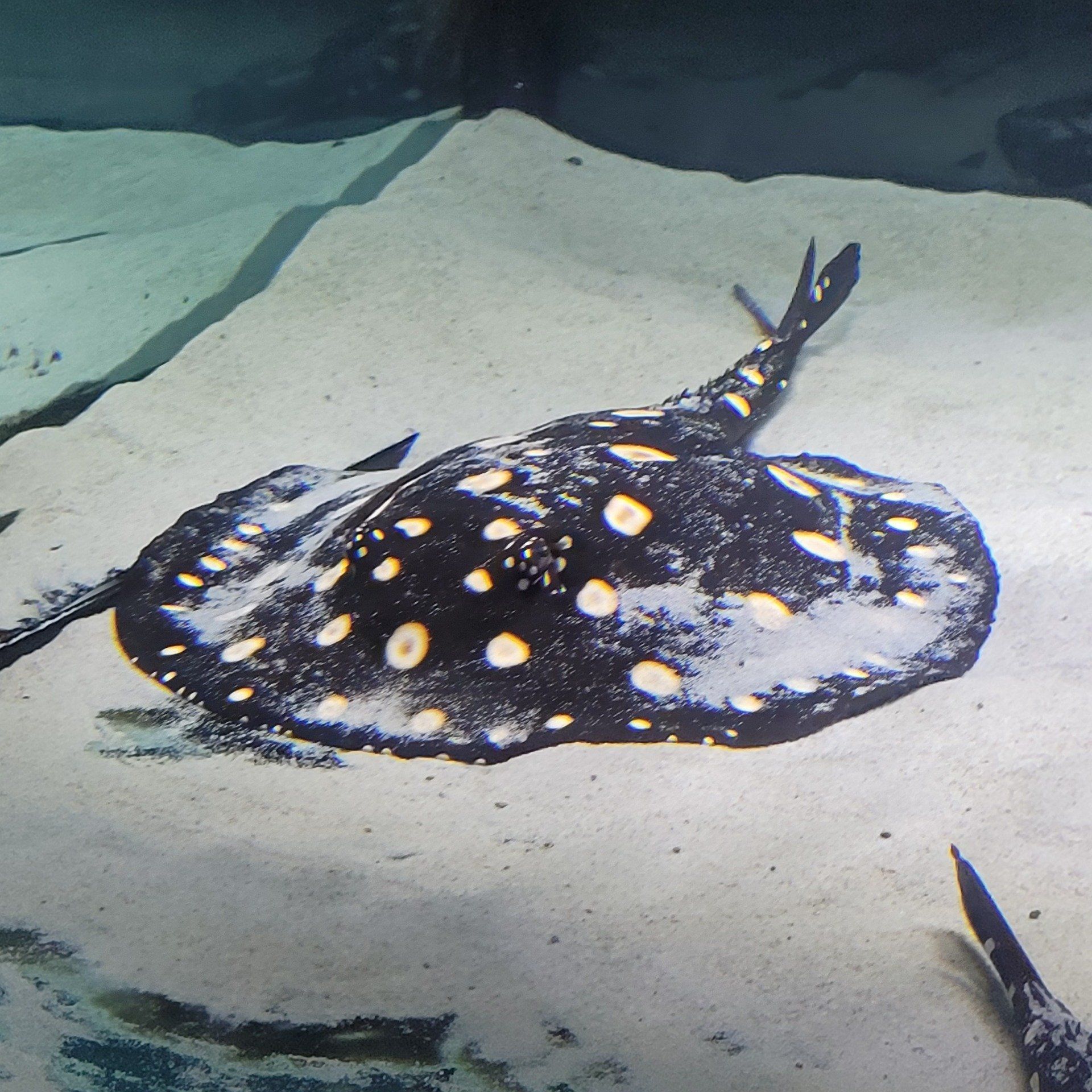
Titolo diapositiva
Scrivi qui la tua didascaliaPulsante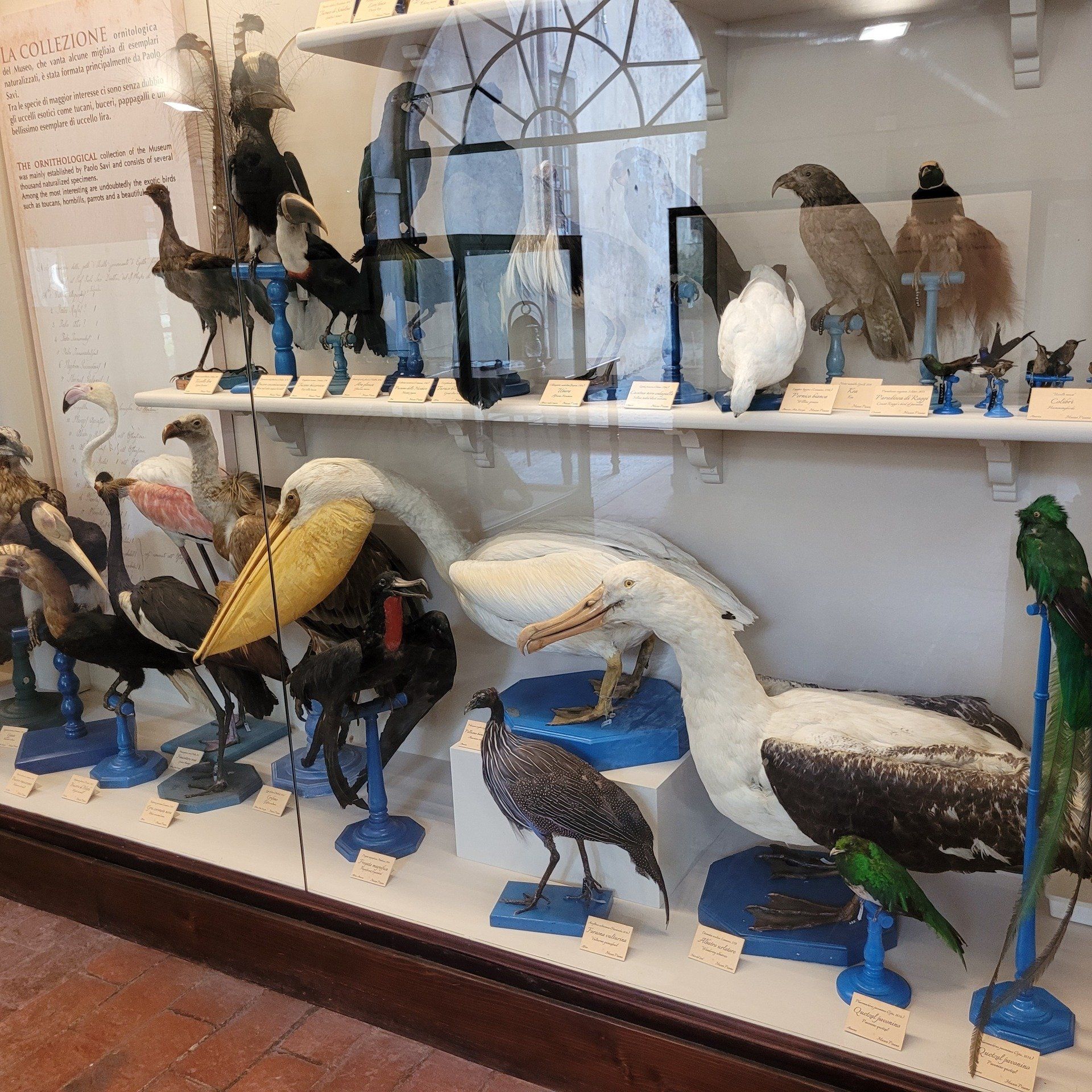
Titolo diapositiva
Scrivi qui la tua didascaliaPulsante
Titolo diapositiva
Scrivi qui la tua didascaliaPulsante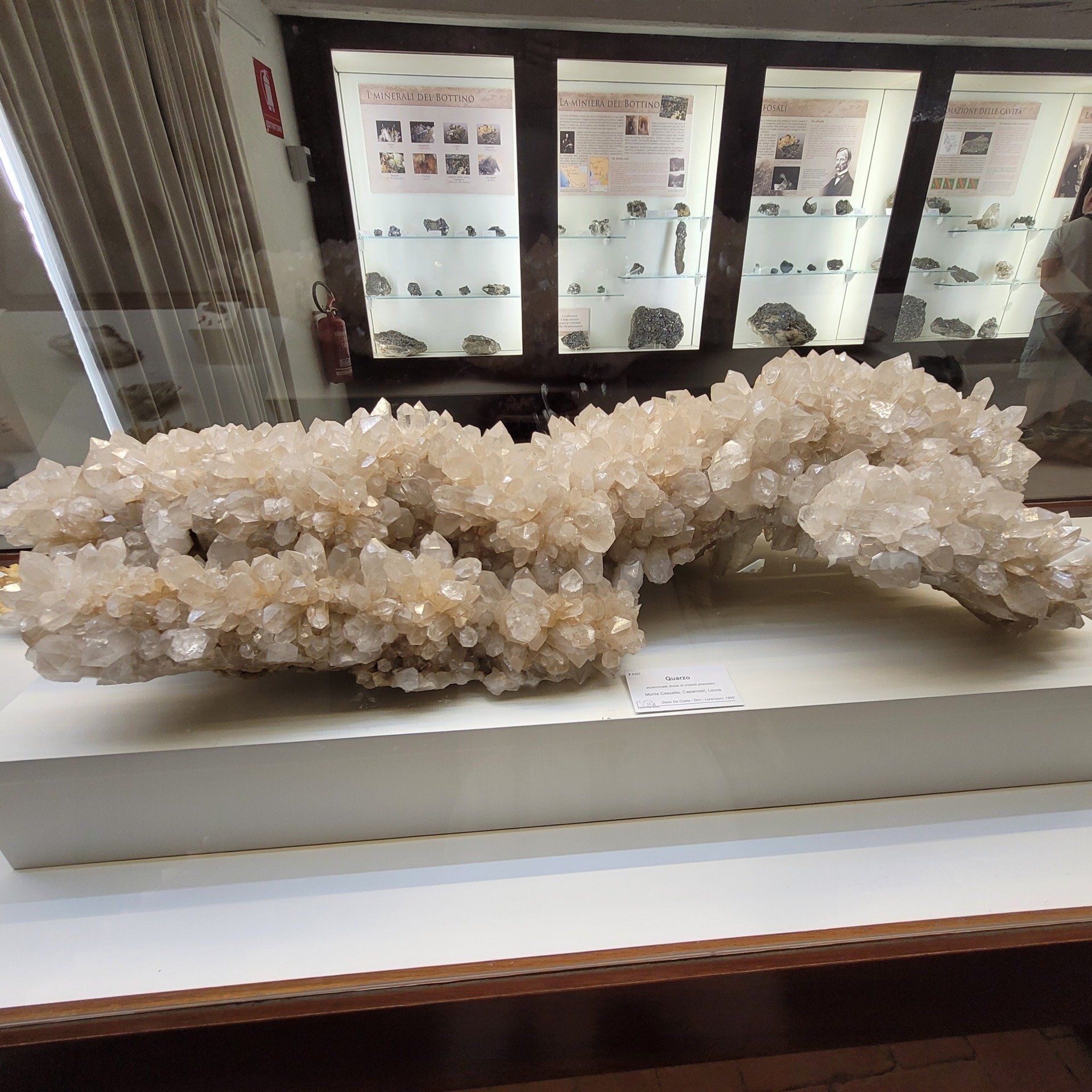
Titolo diapositiva
Scrivi qui la tua didascaliaPulsante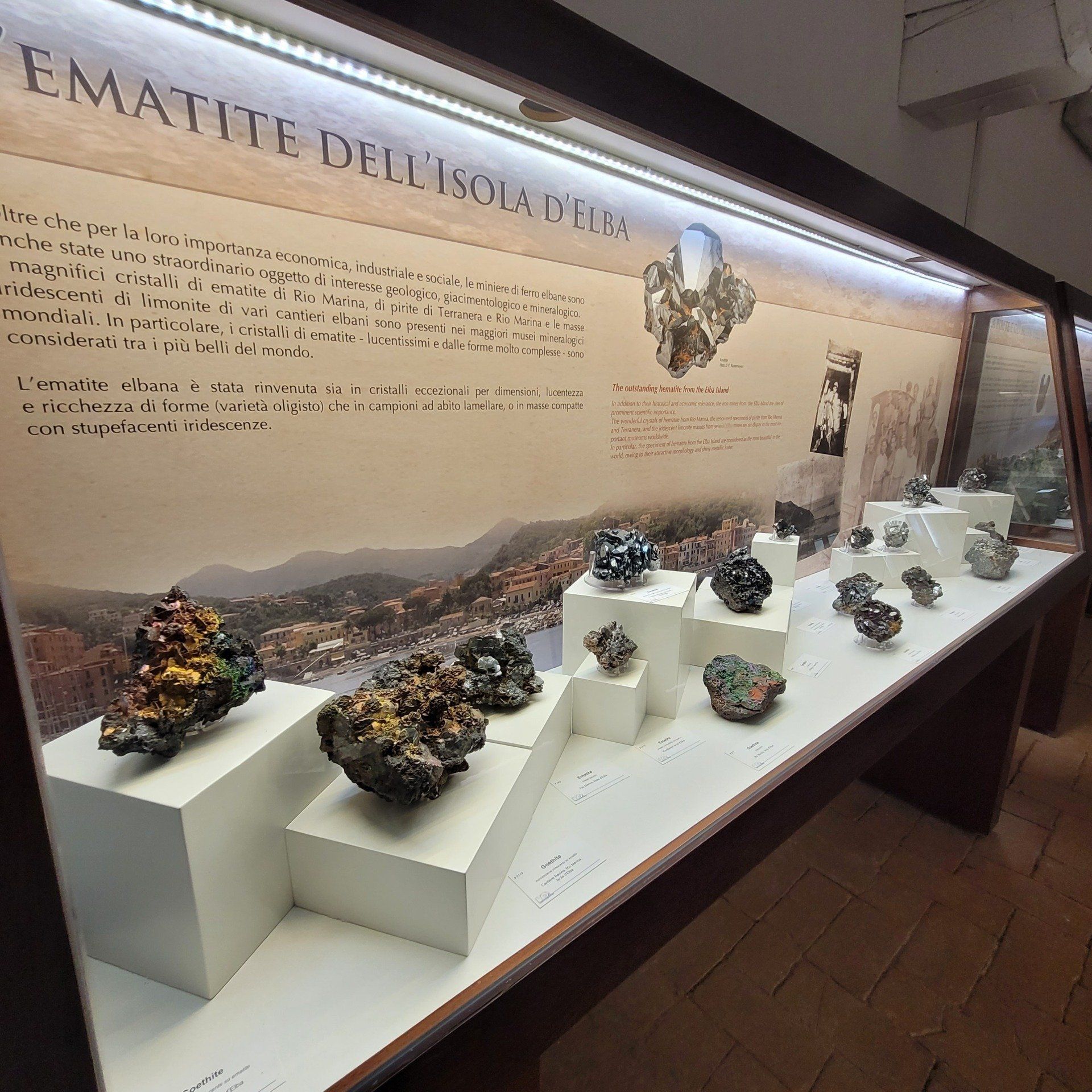
Titolo diapositiva
Scrivi qui la tua didascaliaPulsante
-
Calci, Pisa - Natural History Museum
Calci, Pisa - Natural History Museum
Today the Charterhouse hosts two distinct museums: the Charterhouse, abandoned by the few remaining monks in 1972, became the National Museum of the Monumental Charterhouse of Calci; while in 1979 the western part of the complex was granted in perpetual and free use to the University of Pisa, which founded the Natural History Museum of the University of Pisa.
The tour of the Natural History Museum winds through the Certosa in the most "humble" rooms, those used by lay monks in their daily work: cellars, warehouses, oil mill, carpentry, barn and so on. These premises take on a new life by hosting the prestigious collections of the Museum, the result of almost 500 years of history: on the ground floor, in the “Chamber of Wonders” period artifacts from all over the world are exhibited; upstairs there are two splendid sections with numerous species of very well embalmed mammals and beautiful dioramas at the end of the hall. Finally, on the upper floor you will find the museum of marine cetaceans, where there are dozens of skeletons of… monstrous dimensions! These are unique collections of historical and scientific importance, which include finds from zoology, paleontology and mineralogy, as well as live animals housed in the largest freshwater aquarium in Italy.
-
Opening times and entrance tickets
Natural History Museum
The Natural History Museum is organized into two exhibition sectors, one which includes permanent exhibitions (Historical Gallery, Museum Garden, Gallery of Amphibians and Reptiles, Gallery of Mammals, Hall of Archaeocetes, Gallery of Cetaceans, Room of the Evolution of 'Man, Mineral Gallery, Room "The Earth between myth and science", Gallery of geological eras, Dinosaur Room, Room of the Evolution of Birds) and the other which includes the Aquarium and the Temporary Exhibition and the Room of the prehistory of Monte Pisano.
Permanent Exhibitions Entrance:
Full: € 8.00
Reduced (from 6 to 18 years and over 65): € 6.00
Family (1 adult + 1 child): € 8.00
Free for: children up to 6 years of age, people with disabilities and their caregivers.
Aquarium entrance and temporary exhibition:
Full: € 8.00
Reduced (from 6 to 18 years and over 65): € 6.00
Family (1 adult + 1 child): € 8.00
Free for children up to 6 years of age, people with disabilities and their carers
Entrance Permanent exhibitions, Aquarium and temporary exhibition:
Full: € 14.00
Reduced (from 6 to 18 years and over 65): € 10.00
Family (1 adult + 1 child): € 14.00
Free for children up to 6 years of age, people with disabilities and their caregivers.
Calci, Pisa - Natural History Museum
30/3/2025
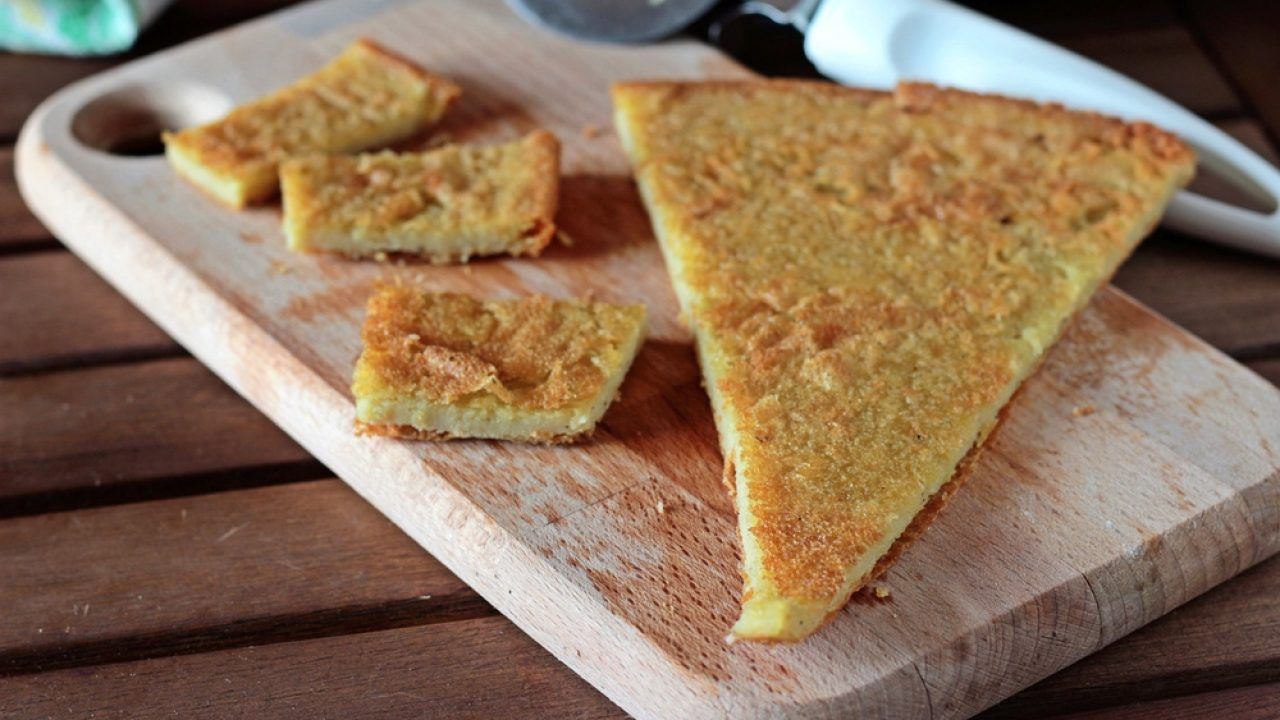
Titolo diapositiva
Scrivi qui la tua didascaliaPulsante
-
Pisa - Chickpea flat bread
It is said that after the battle of Meloria (1284), during the journey that brought the Pisan prisoners to Genoa, a strong storm caused the breaking of some oil barrels and crates of chickpea flour. The golden powder thus blended with oil and sea water and, thanks to the heat of the August sun this fragrant puree dried and transformed into the so-called "Pisan gold’.
Prepared in large copper pans and served with a sprinkling of salt and pepper the cecina is present in almost all the pizzerias in the city of Pisa and of the neighboring municipalities.
It can be tasted inside a stiacciatina, a typical focaccia, but it is also delicious as a filling for a piece of "pizza alla pisana", with tomato, parmesan, capers and anchovies, traditionally accompanied by a glass of “blonde foam".
-
Recipe of Chickpea flat bread
Ingredients
200 gr of chickpea flour
600 gr of water
6 tablespoons of extra virgin olive oil
1 teaspoon of salt
pepper as needed
rosemary
Place the chickpea flour and salt in a bowl, mix with a whisk and start pouring the water a little at a time until all lumps are eliminated.
Add three tablespoons of oil and mix again. Cover the bowl and let the mixture rest for at least three hours.
Turn on the oven to 250 ° C and when it reaches temperature uniformly oil a 32 cm diameter pan with three tablespoons of oil.
Pour the batter into the pan add the needles of a sprig of rosemary and bake. Cook for 25-30 minutes or until the cecina is golden and a nice crust has formed. Serve hot with a sprinkling of pepper to taste.
Chickpea flat bread - History and recipe
30/3/2025
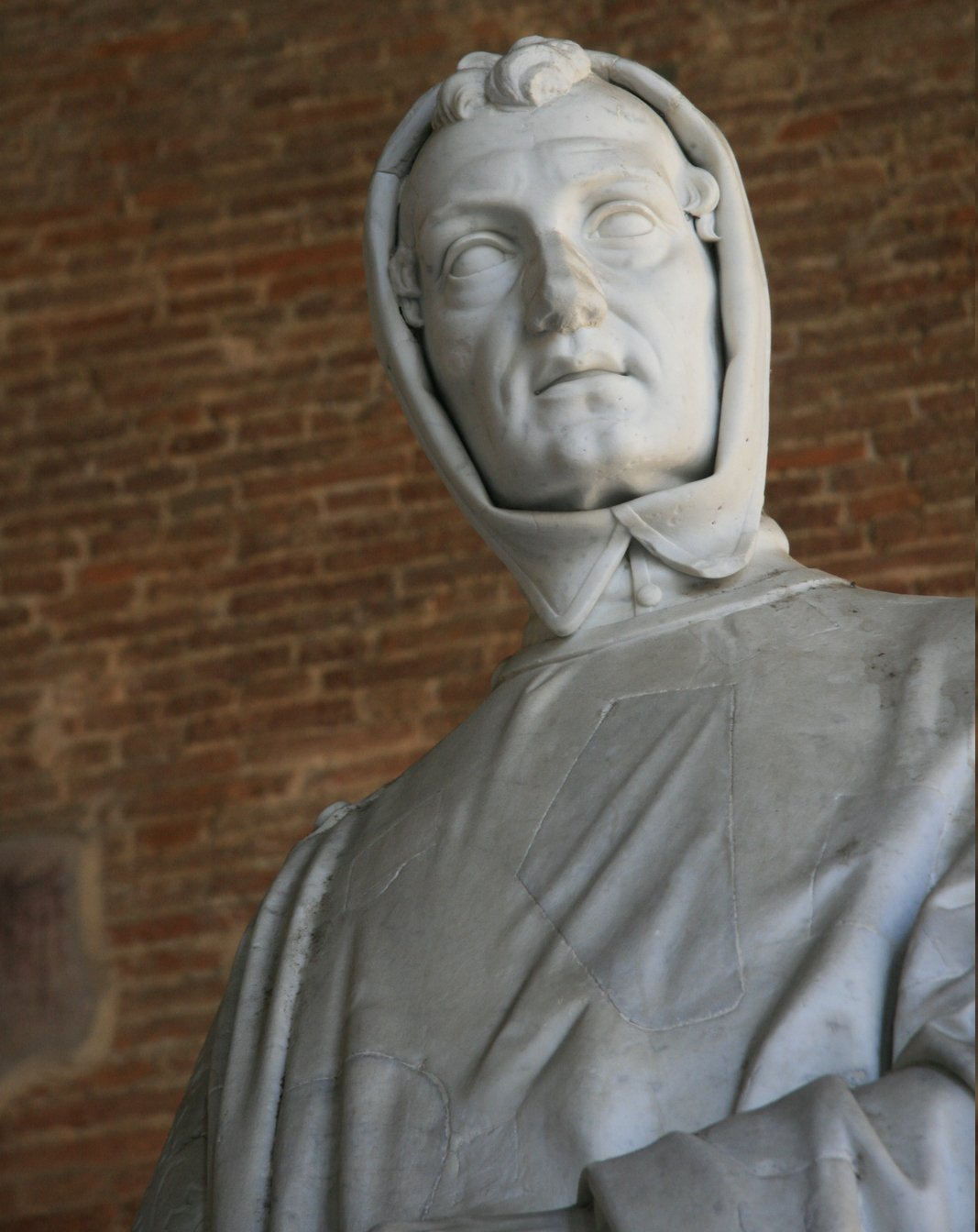
Slide title
Scrivi qui la tua didascaliaButton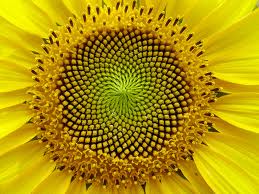
Slide title
Scrivi qui la tua didascaliaButton
-
Pisa - Leonardo Fibonacci, Arab science and the rebirth of mathematics in the West
Probably born in Pisa around 1170, together with his father Guglielmo dei Bonacci (Fibonacci stands for filius Bonacci), a wealthy Pisan merchant and representative of the merchants of the Republic of Pisa (publicus scriba pro pisanis mercatoribus) in the region of Bejaia in Kabilia (Algeria) , Leonardo Fibonacci spent some years in that city, where he studied the arithmetic procedures that Mohammedan scholars were spreading in the various regions of the Arab world. Here he also had early contacts with the world of merchants and learned mathematical techniques unknown in the West. Some of these procedures had been introduced for the first time by the Indians, bearers of a very different culture from the Mediterranean one.
Leonardo Fibonacci, Arab science and the rebirth of mathematics in the West
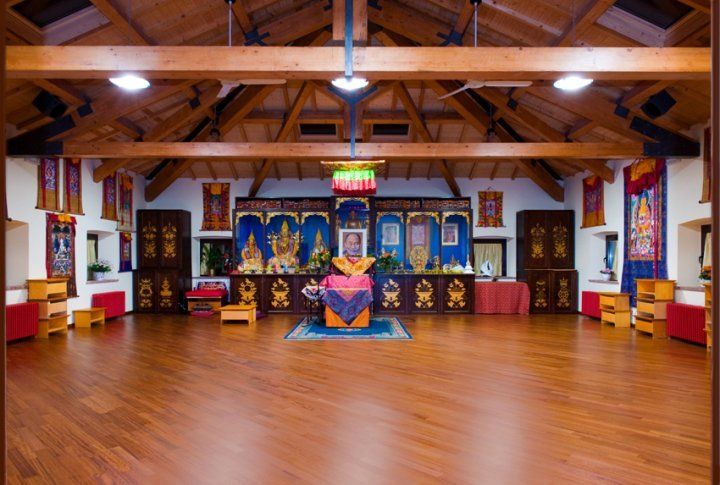
Slide title
Scrivi qui la tua didascaliaButton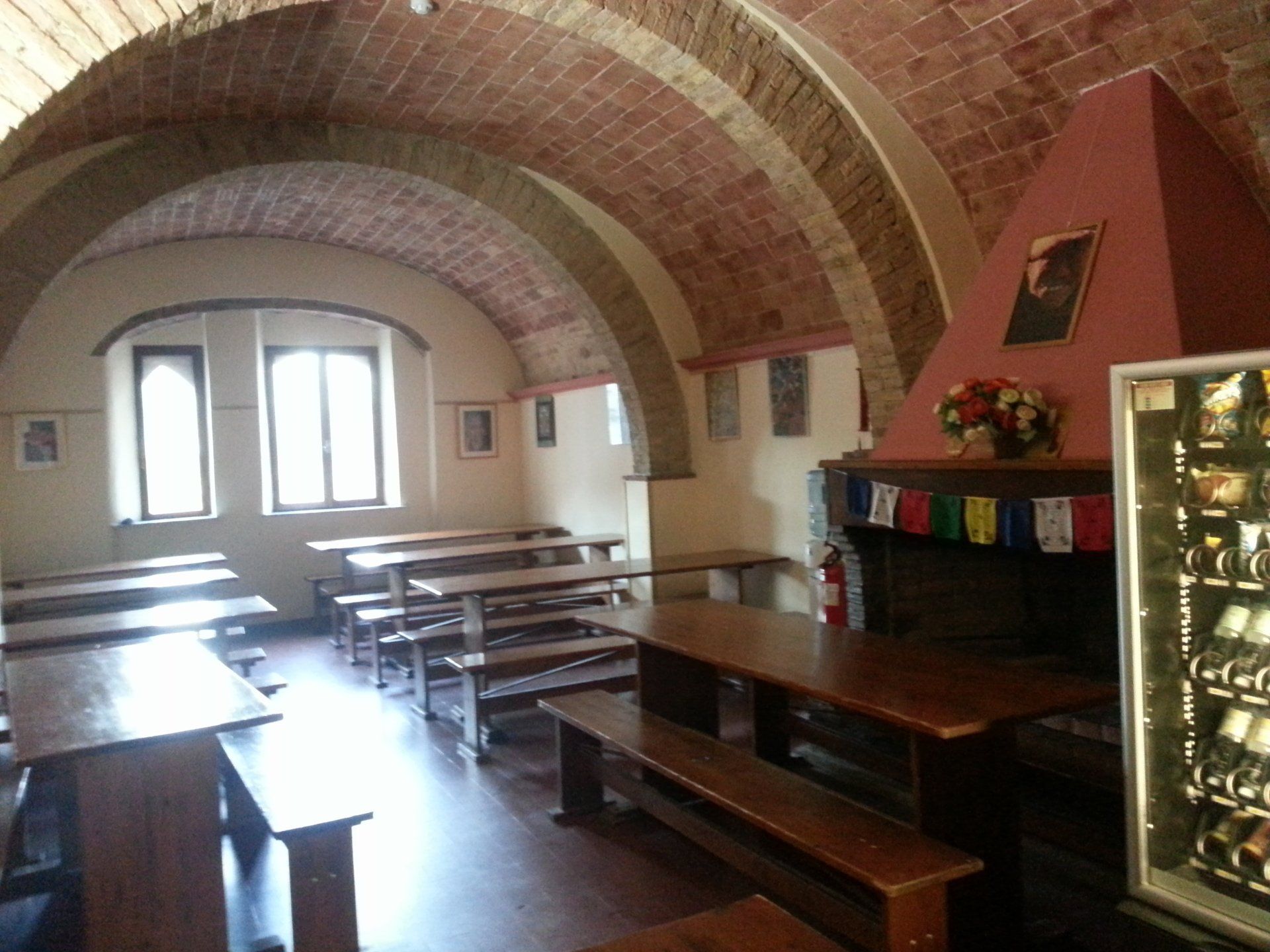
Slide title
Scrivi qui la tua didascaliaButton
Slide title
Scrivi qui la tua didascaliaButton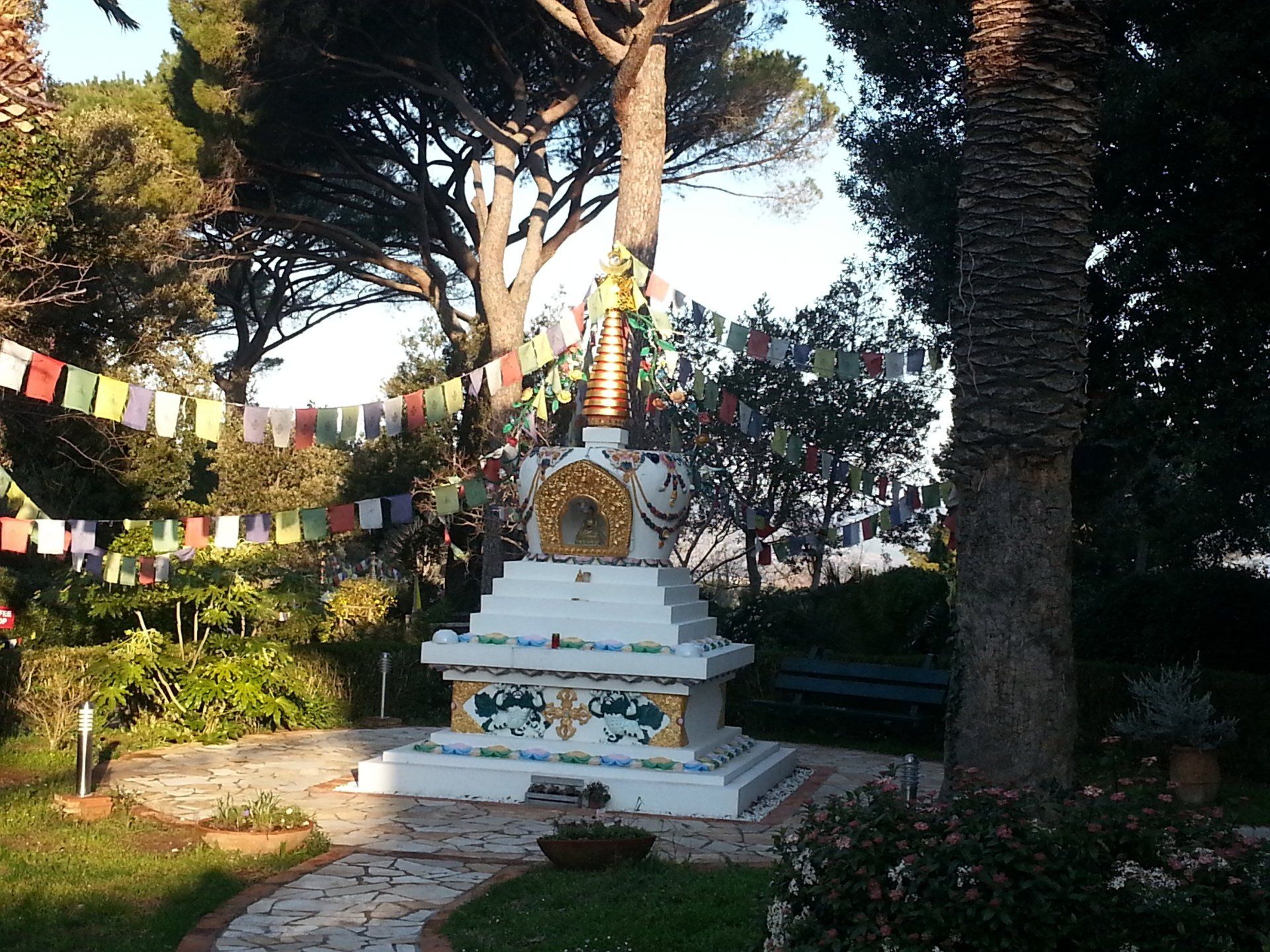
Slide title
Scrivi qui la tua didascaliaButton
Slide title
Scrivi qui la tua didascaliaButton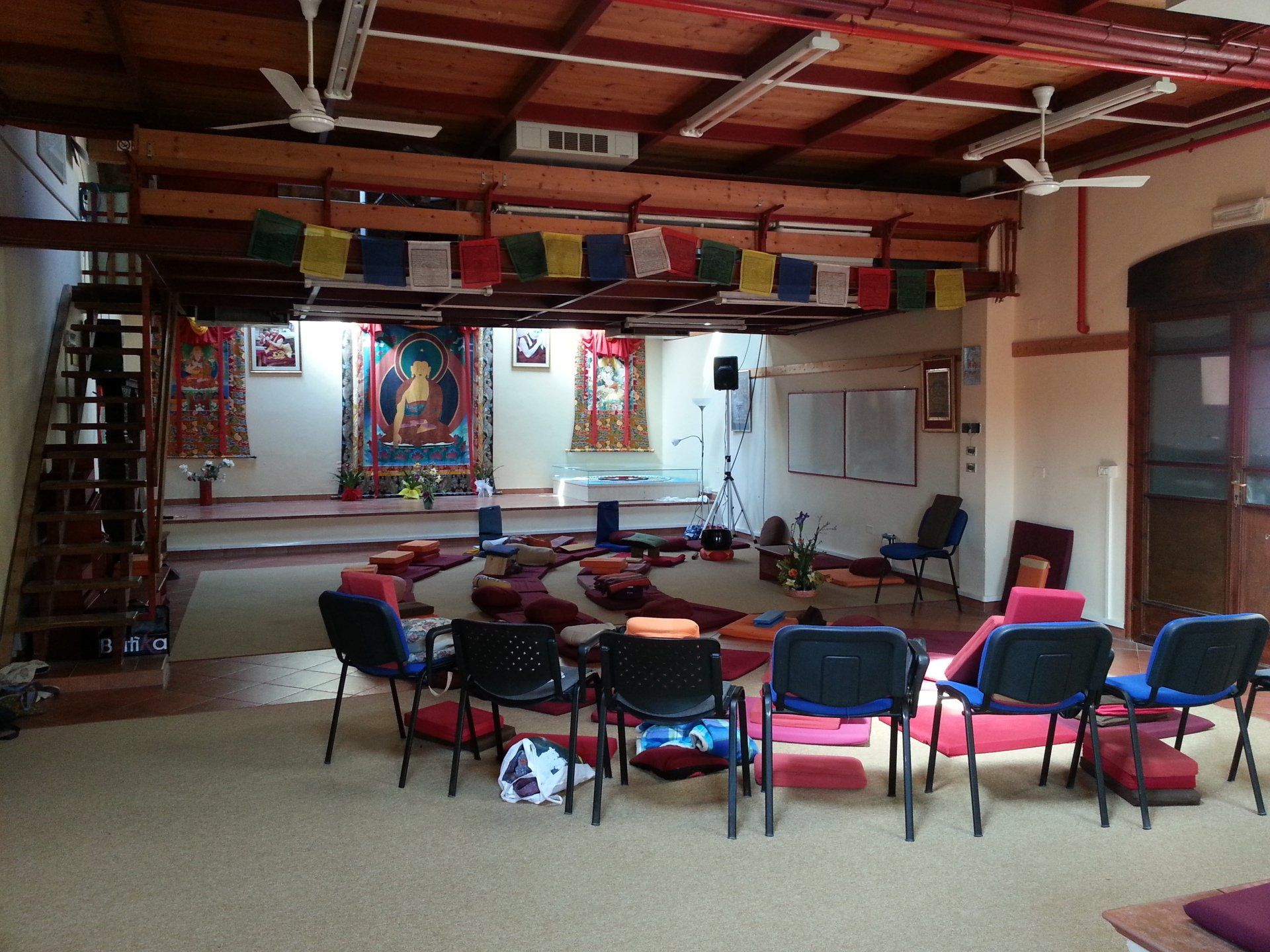
Slide title
Scrivi qui la tua didascaliaButton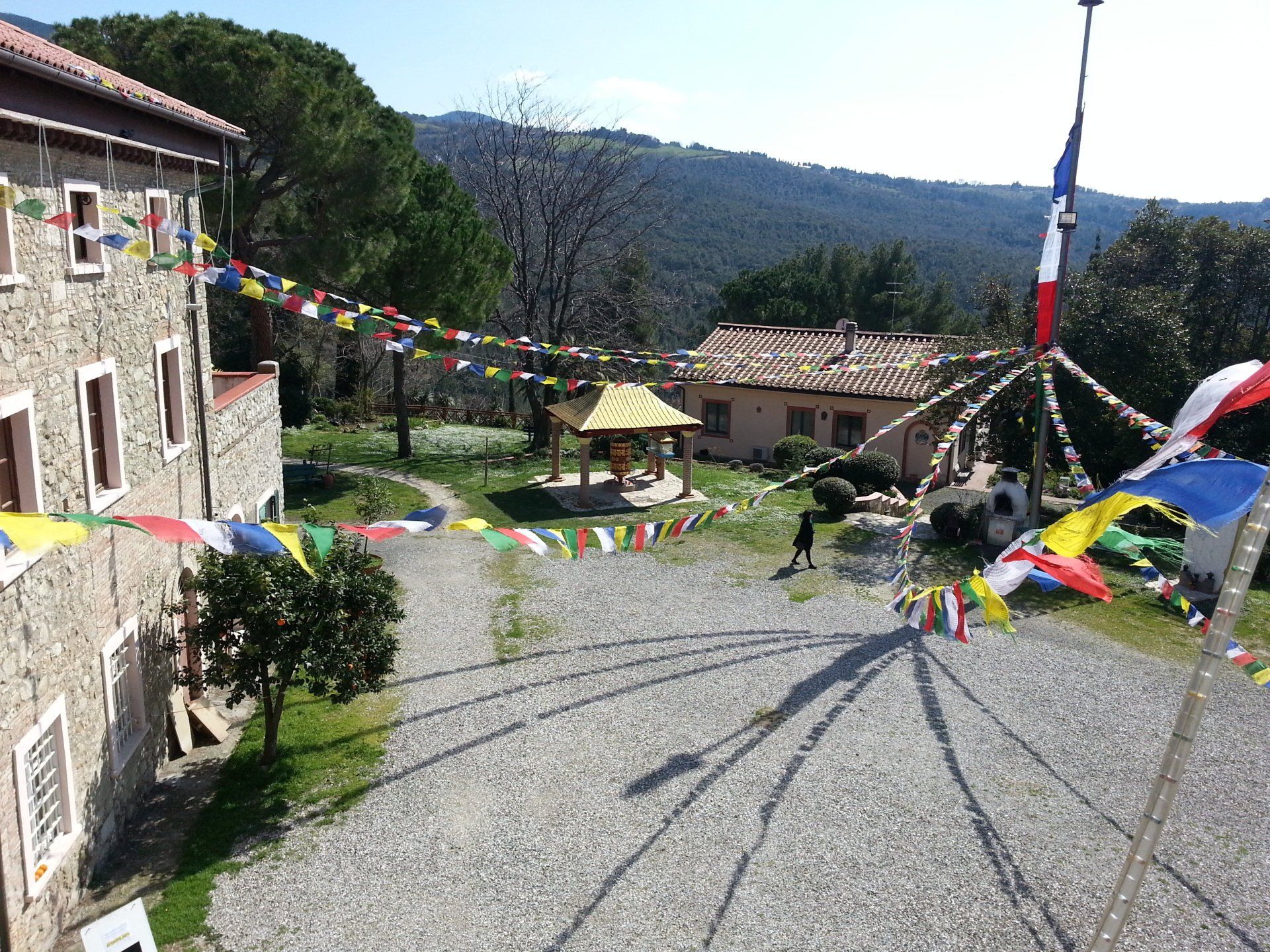
Slide title
Scrivi qui la tua didascaliaButton
-
Pisa - Buddhist spirituality in the heart of Tuscany: the Lama Tzong Khapa Institute in Pomaia
A place where the soul and the body are united in nature, ruled by hospitality and harmonious living, a corner of peace between the Tuscan hills: the Lama Tzong Khapa Institute has stood in Pomaia, near Pisa, since 1976. Renowned as the most important Buddhist centre in Italy and
one of the largest in Europe, the Institute is equipped with meditation rooms, a well-stocked library, comfortable guest rooms and two monasteries. The institute can accommodate thirty residents,
between lay visitors and monks, among them a famous Lama, and is regularly visited by famous teachers and meditators. The Dalai Lama stayed in Pomaia several times and Richard Gere counts among the Institute’s visitors.
Apart from daily meditation, the Institute’s spiritual programme includes fasting and purification, puja and prayer. The art and psychological and physical therapy courses (yoga, tai chi, massage, feng shui, aromatherapy) allow the visitor to enjoy indirect contact with Buddhism and broaden horizons.
Cozy cottages are available for visitors who wish to participate in the Institute’s activity or simply enjoy a relaxing stay in the spiritual atmosphere.
Information:
Istituto Lama Tzong Khapa
Website: www.iltk.org
Pisa - Buddhist spirituality in the heart of Tuscany: the Lama Tzong Khapa Institute in Pomaia



